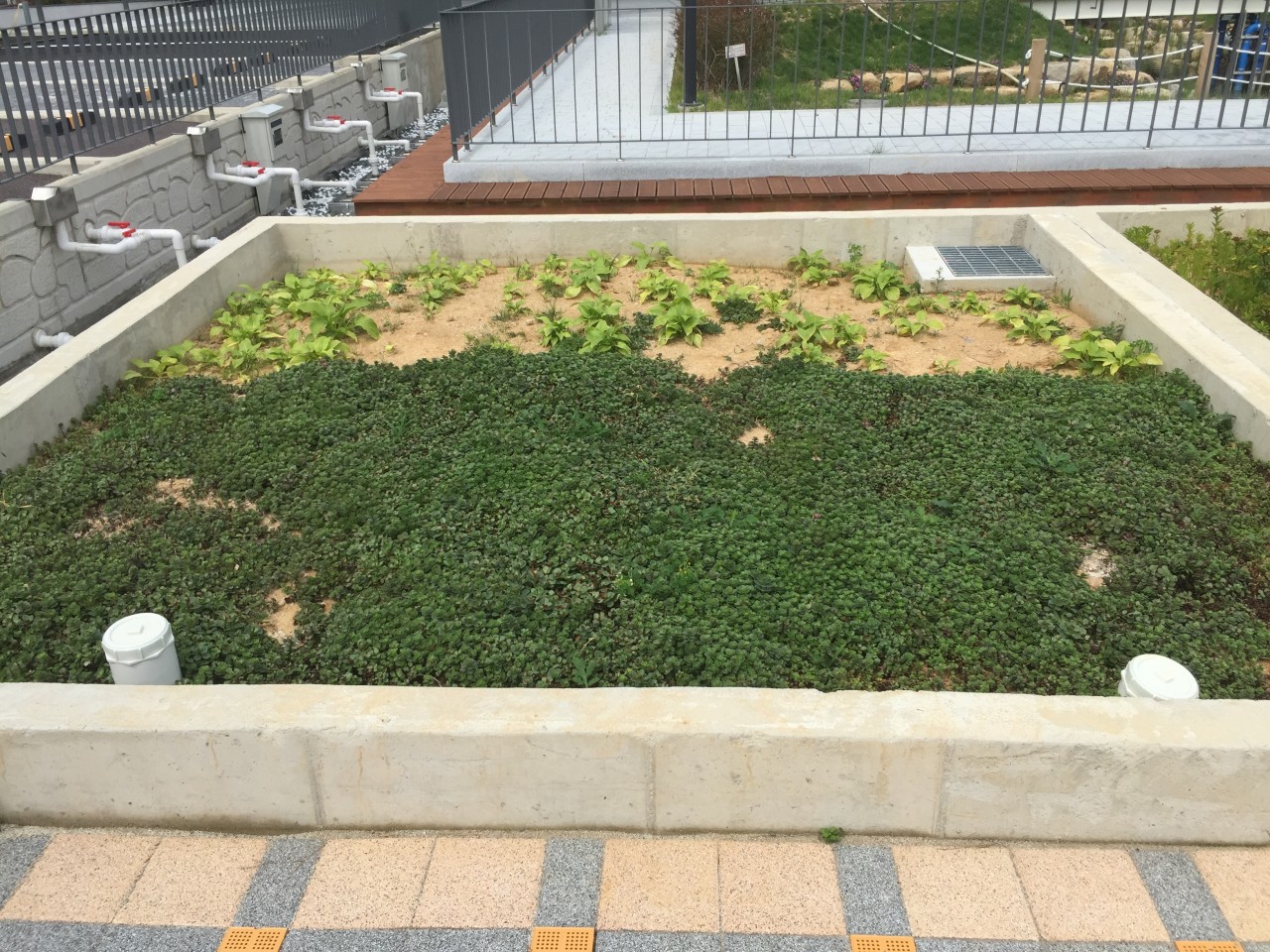
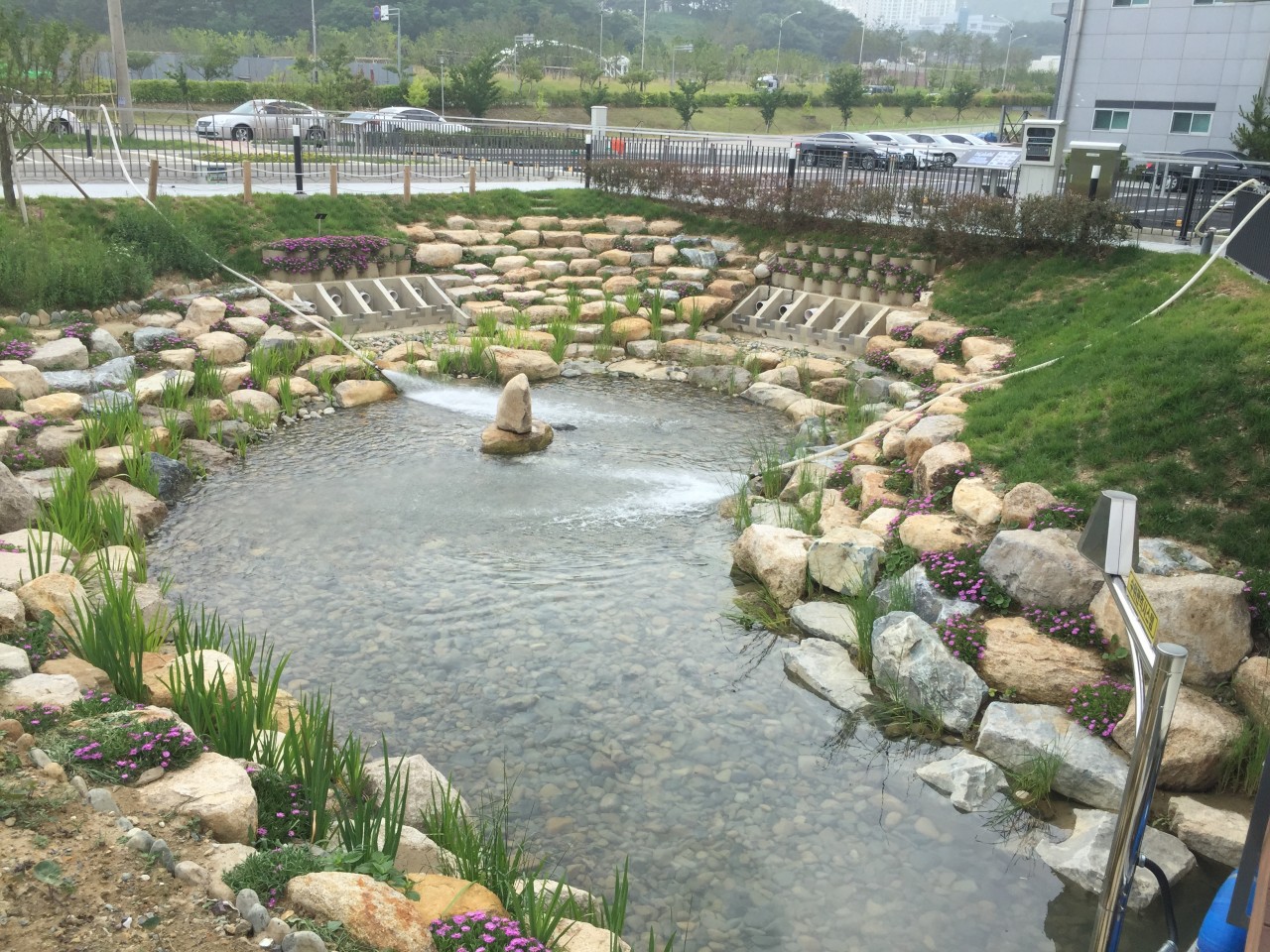
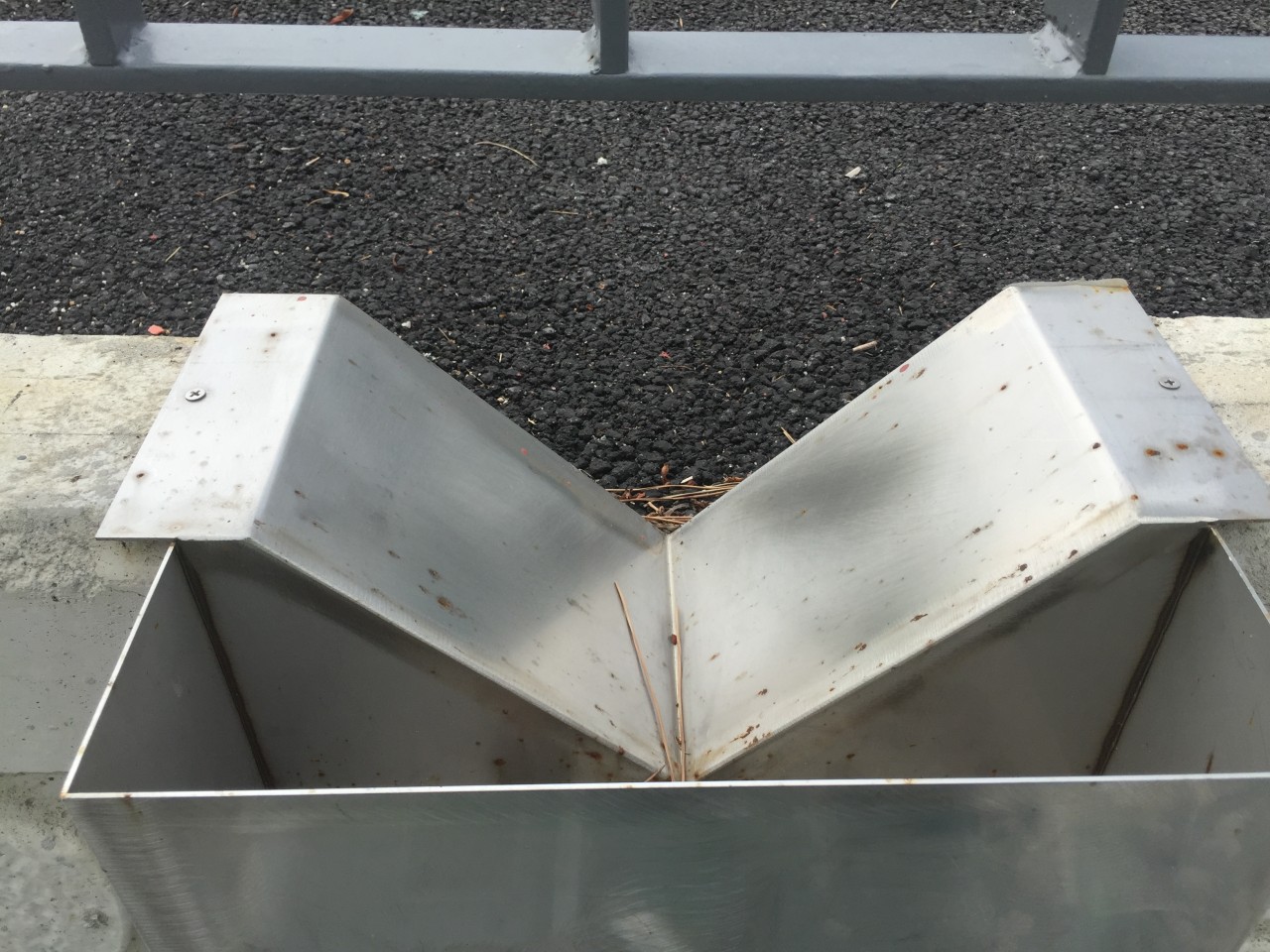

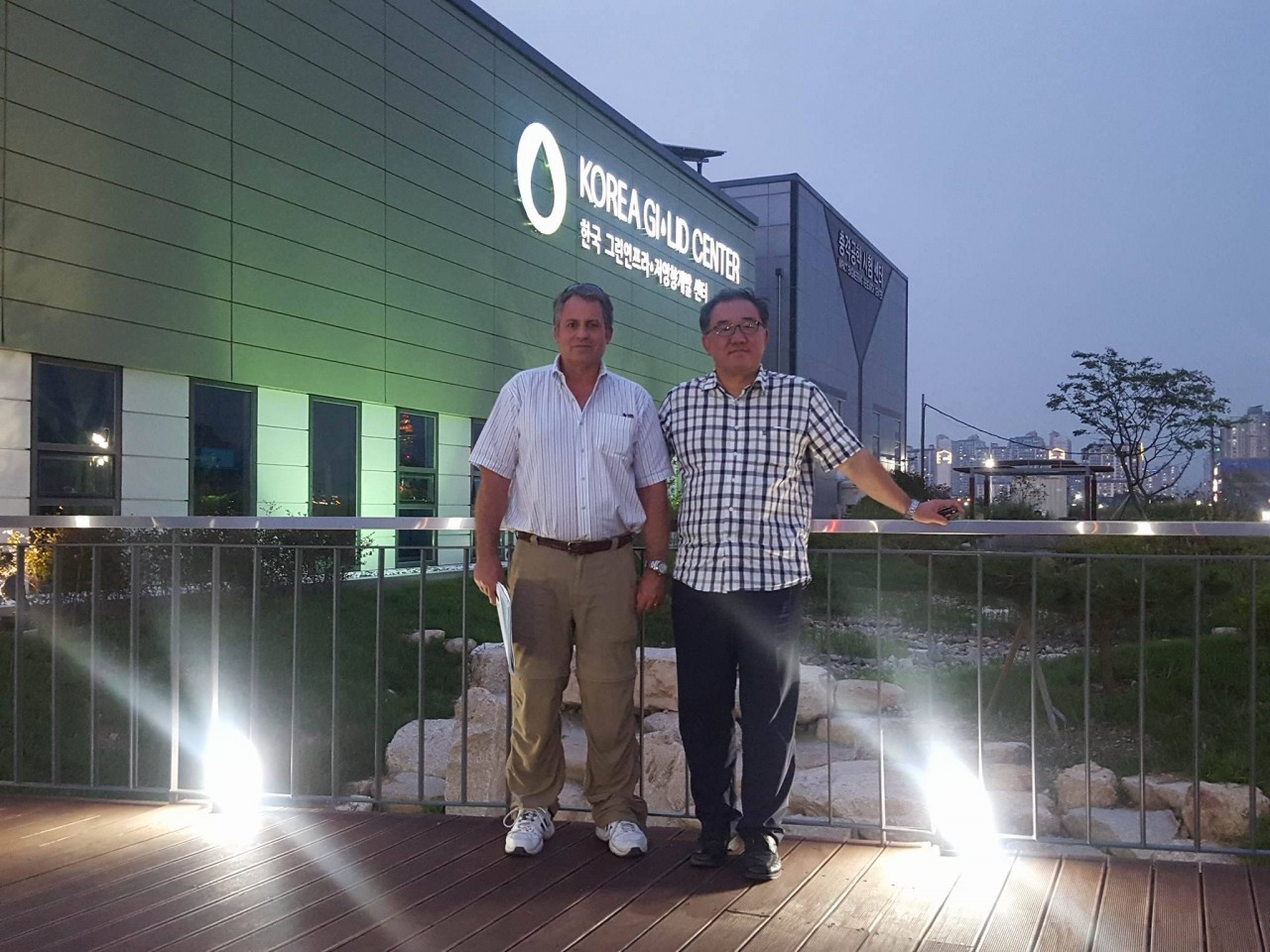
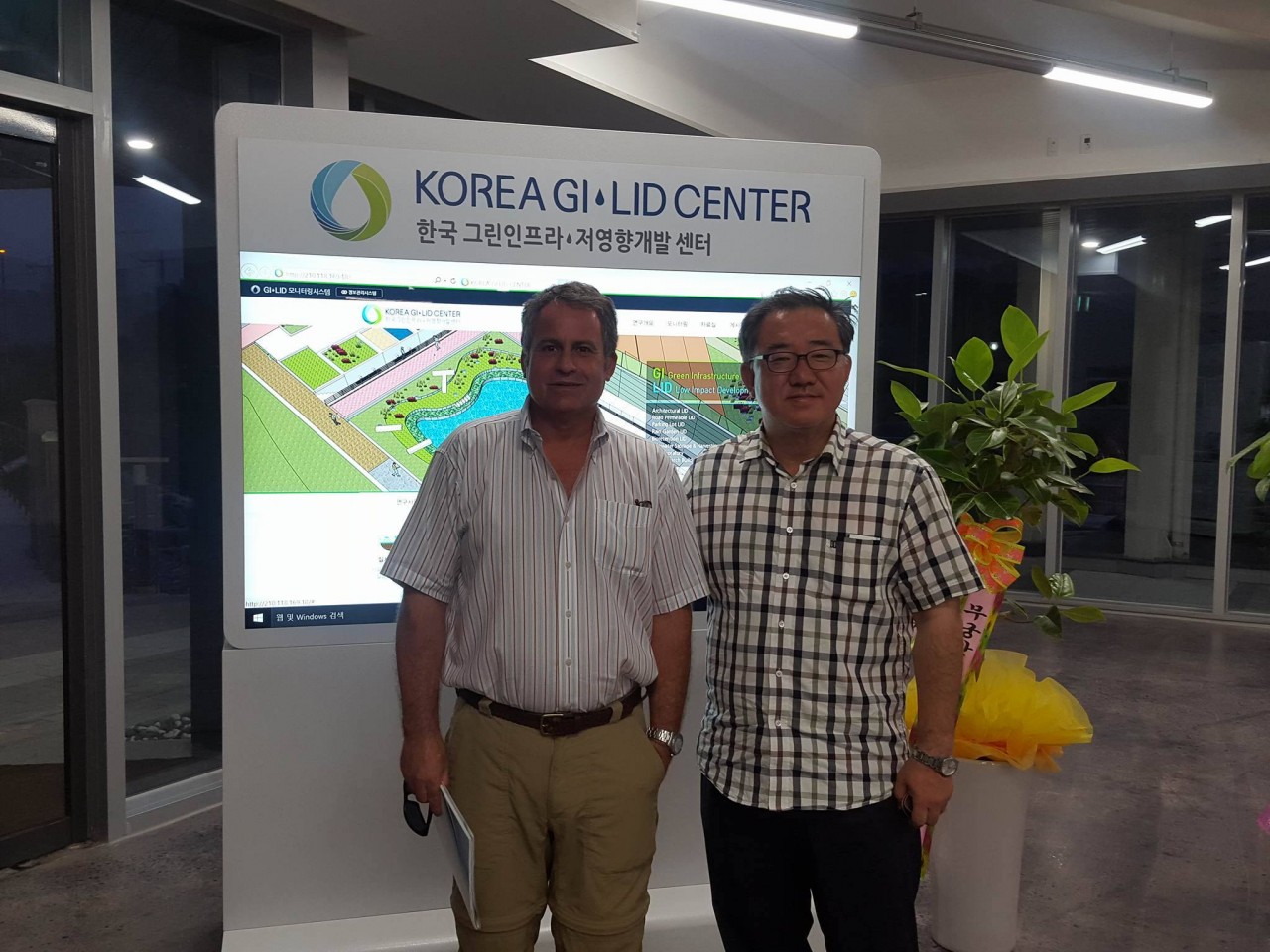
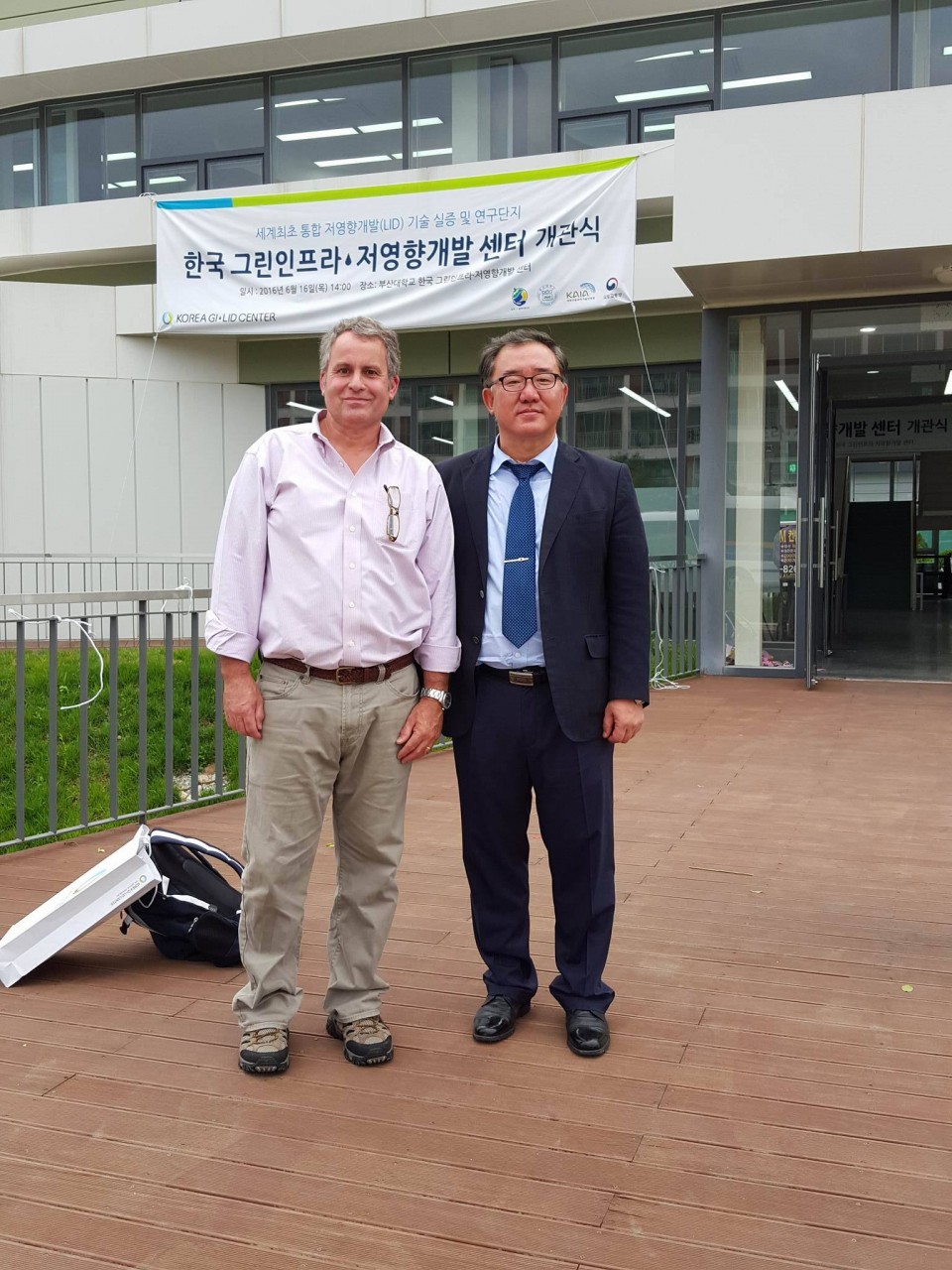
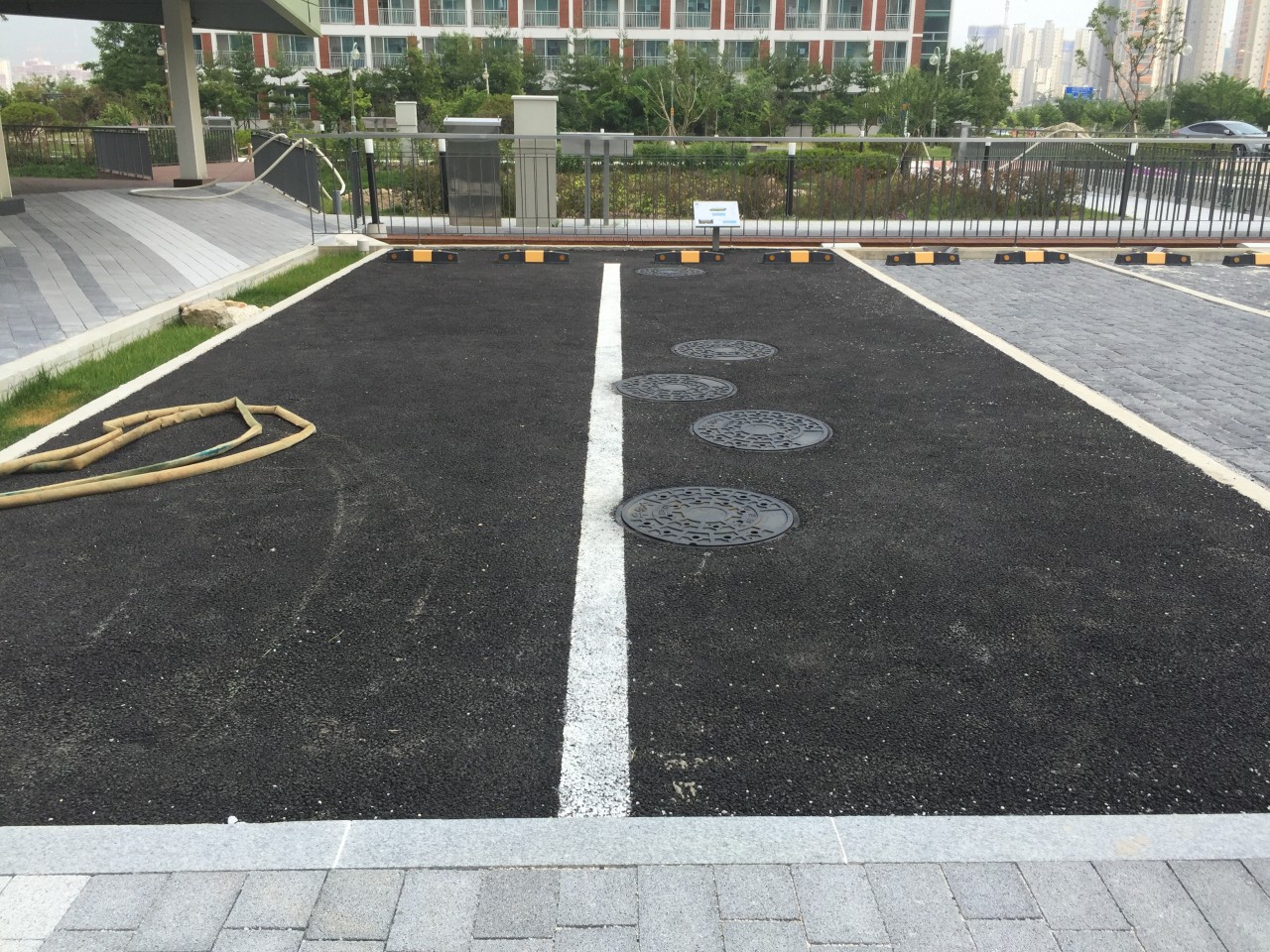
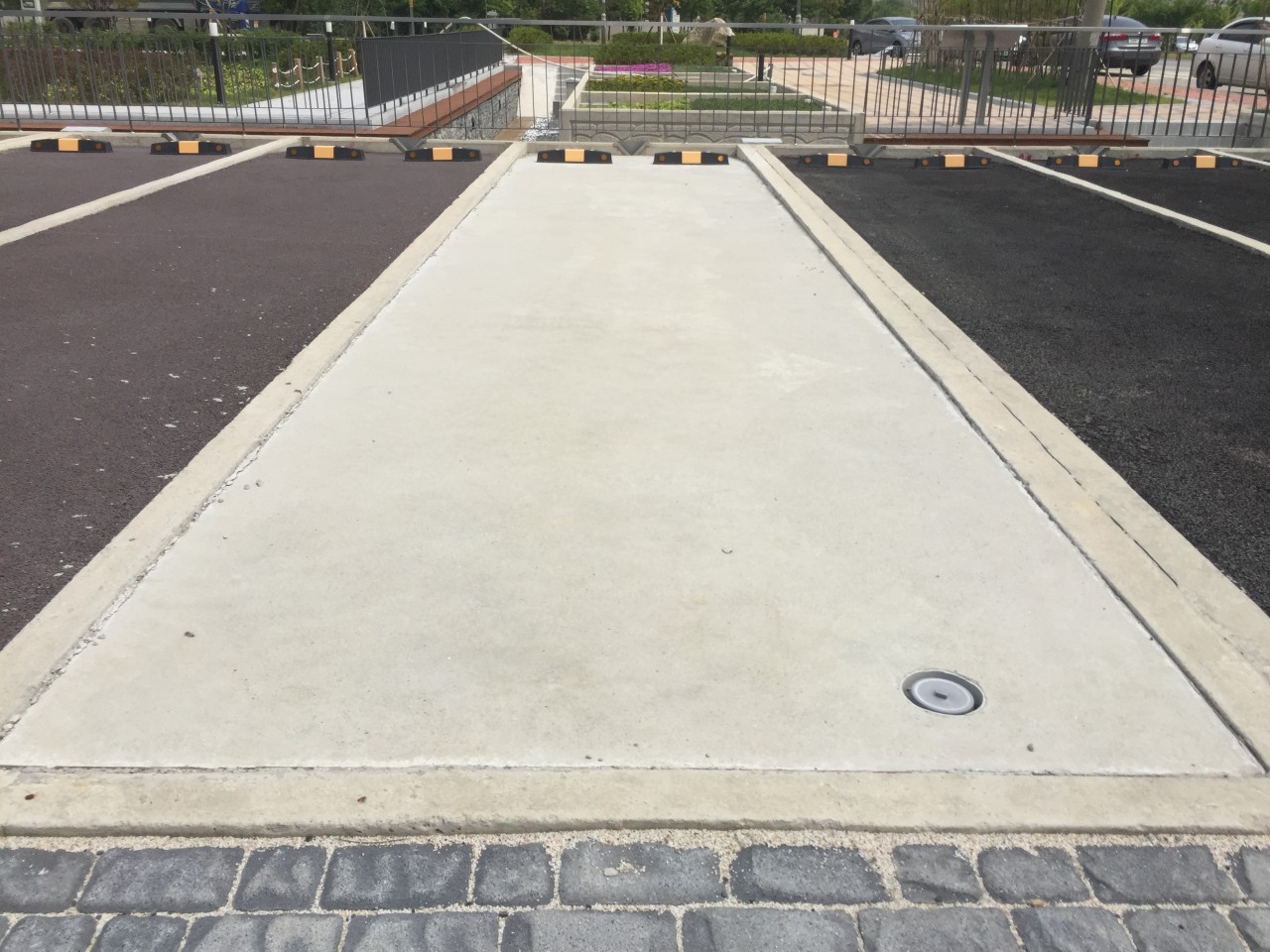
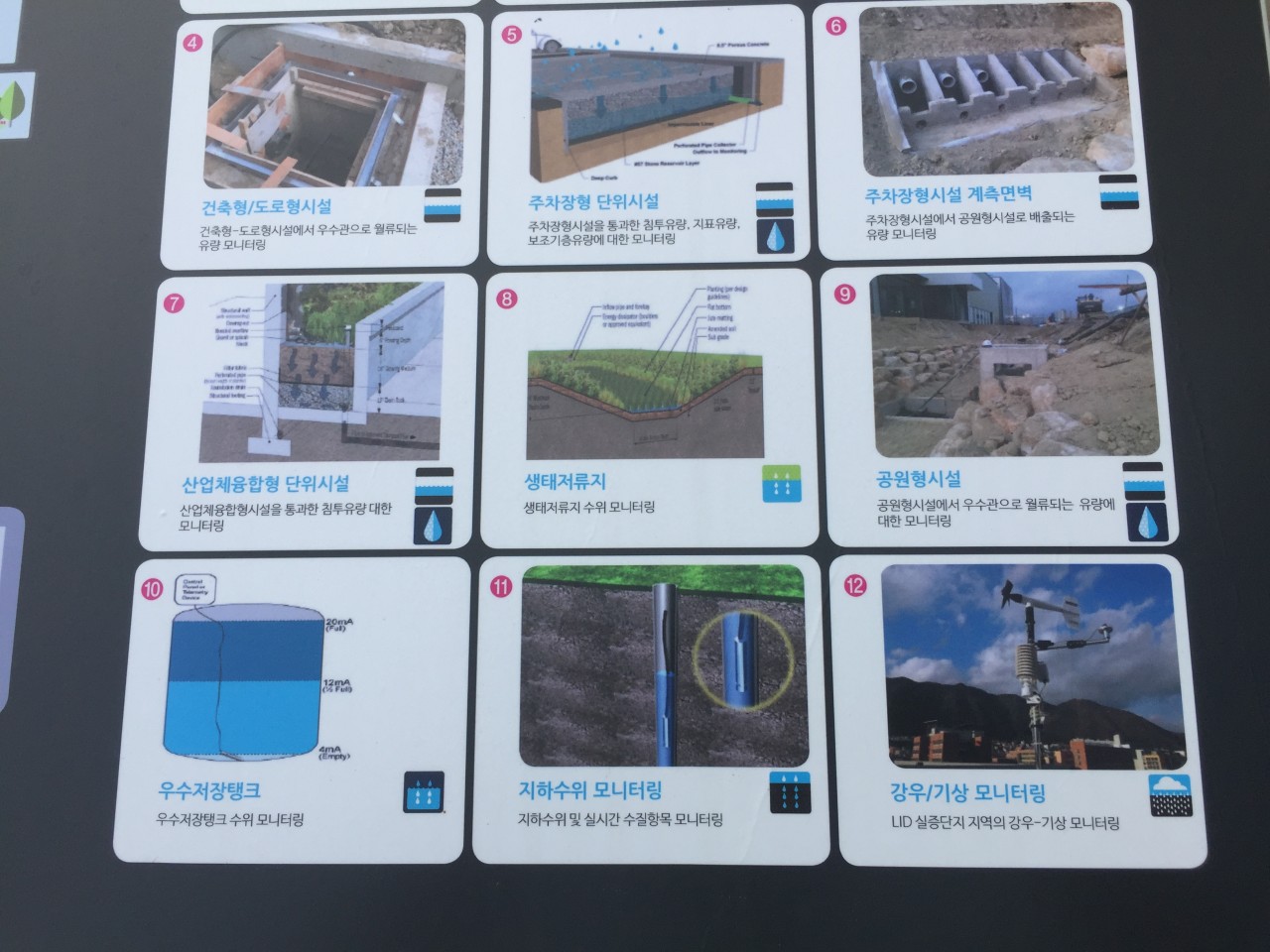
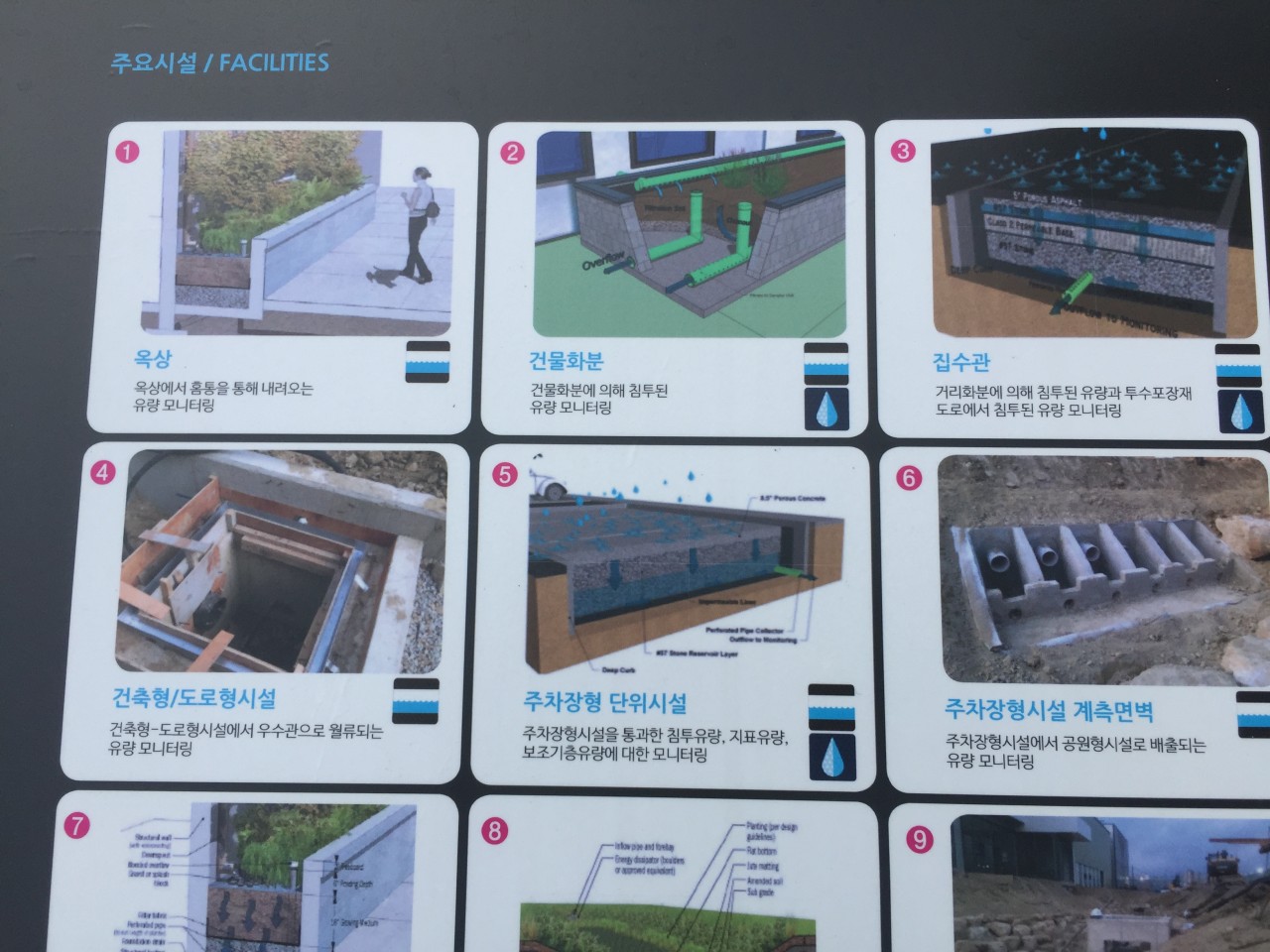
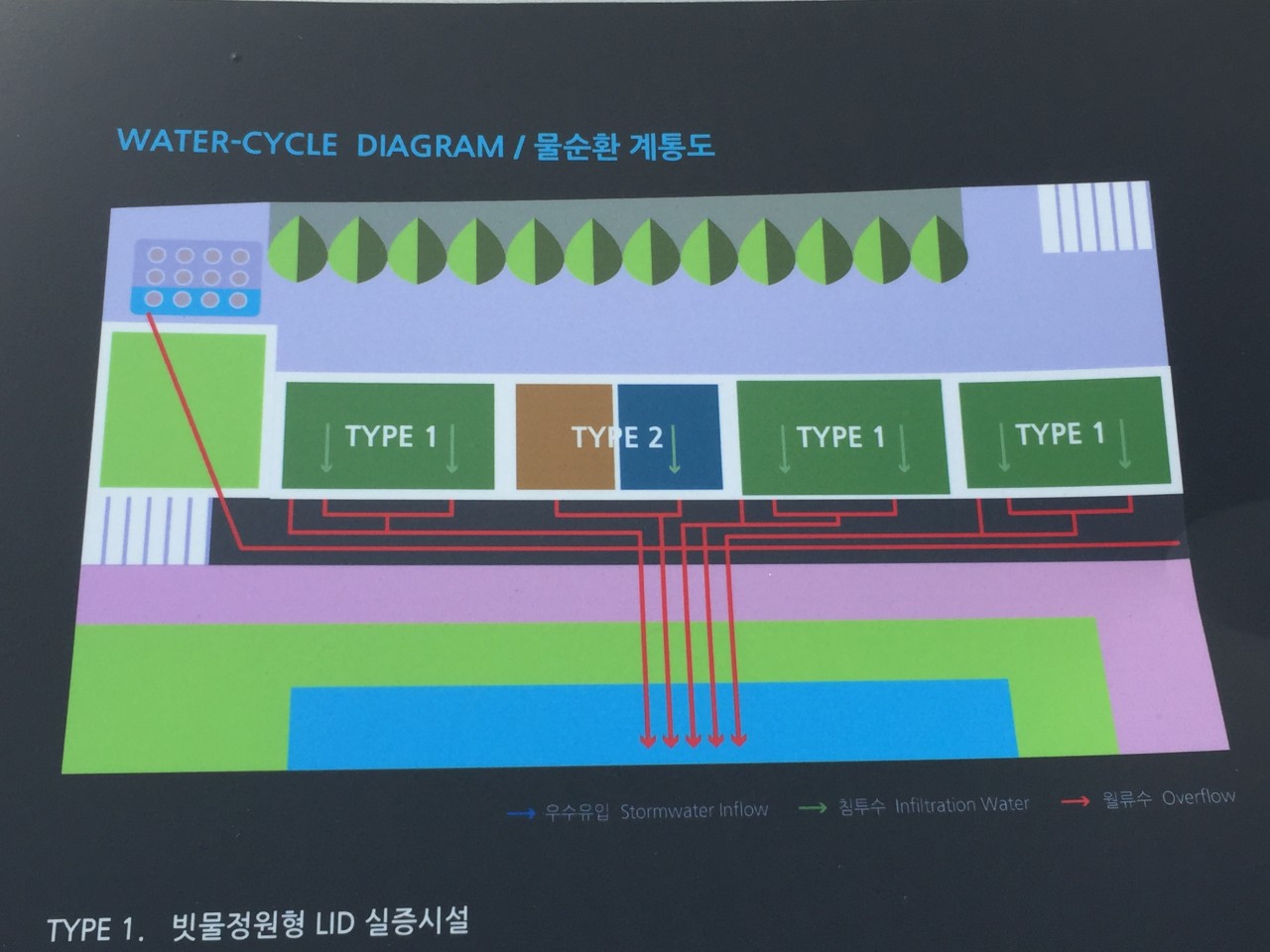
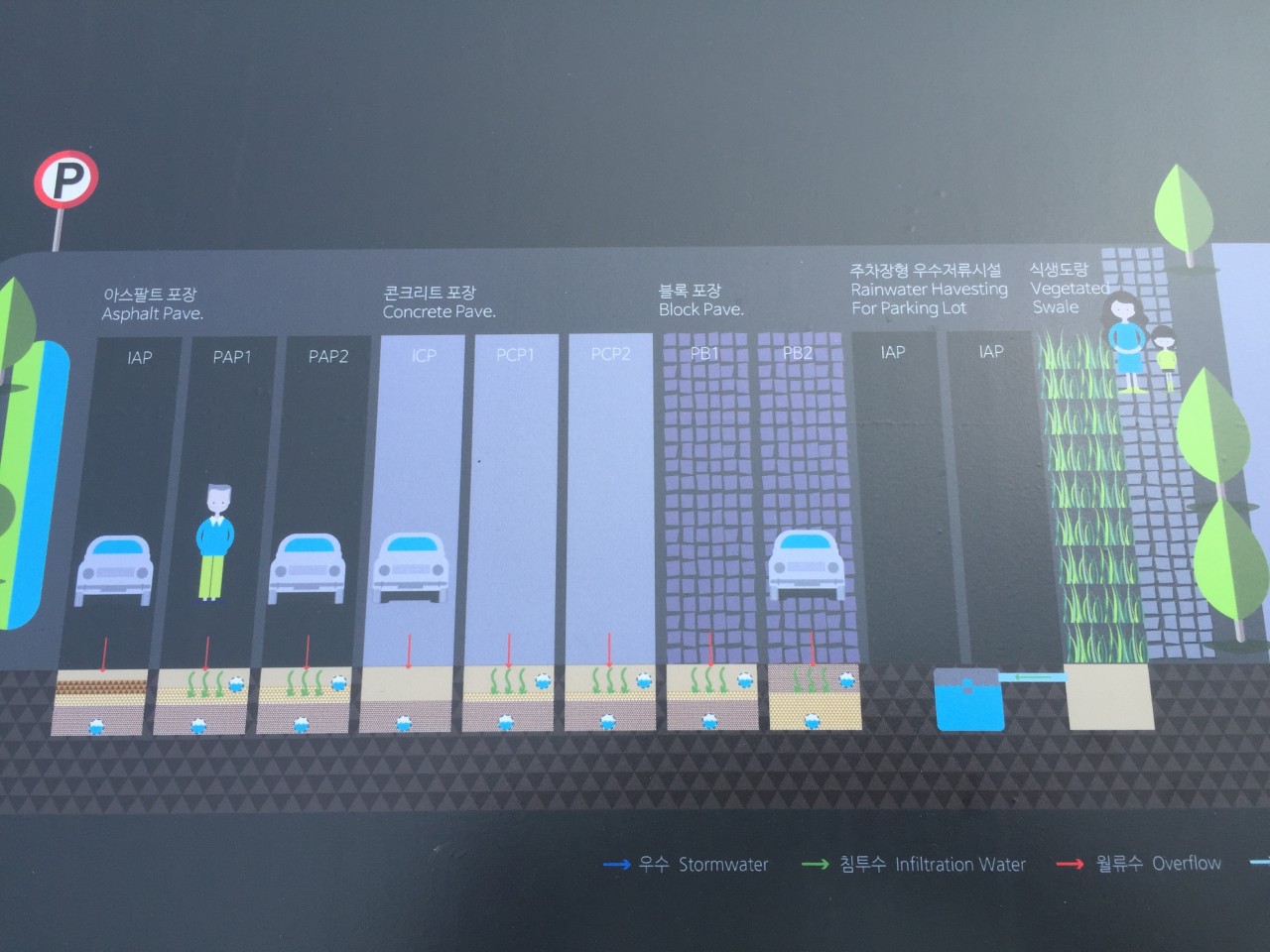
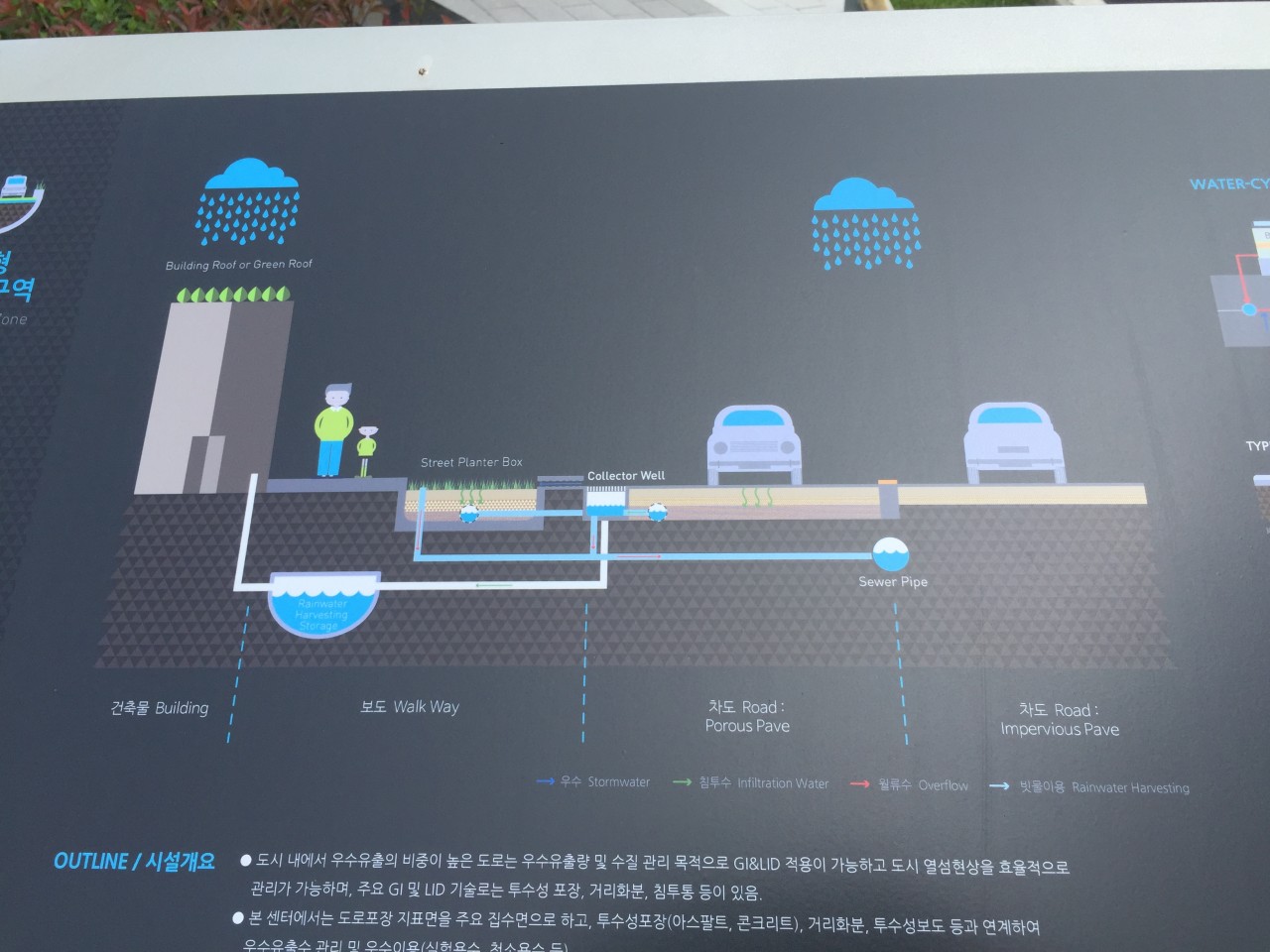
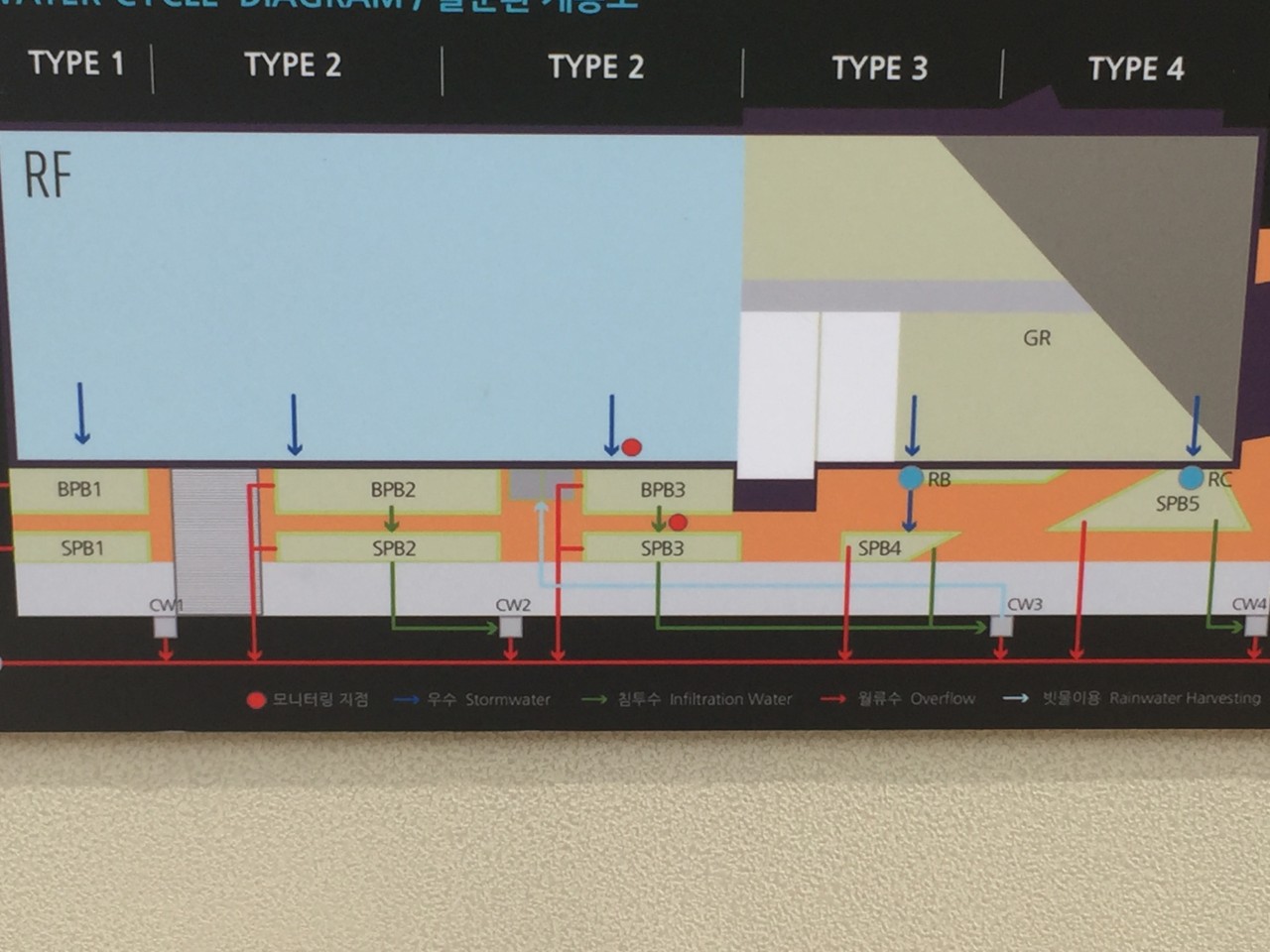
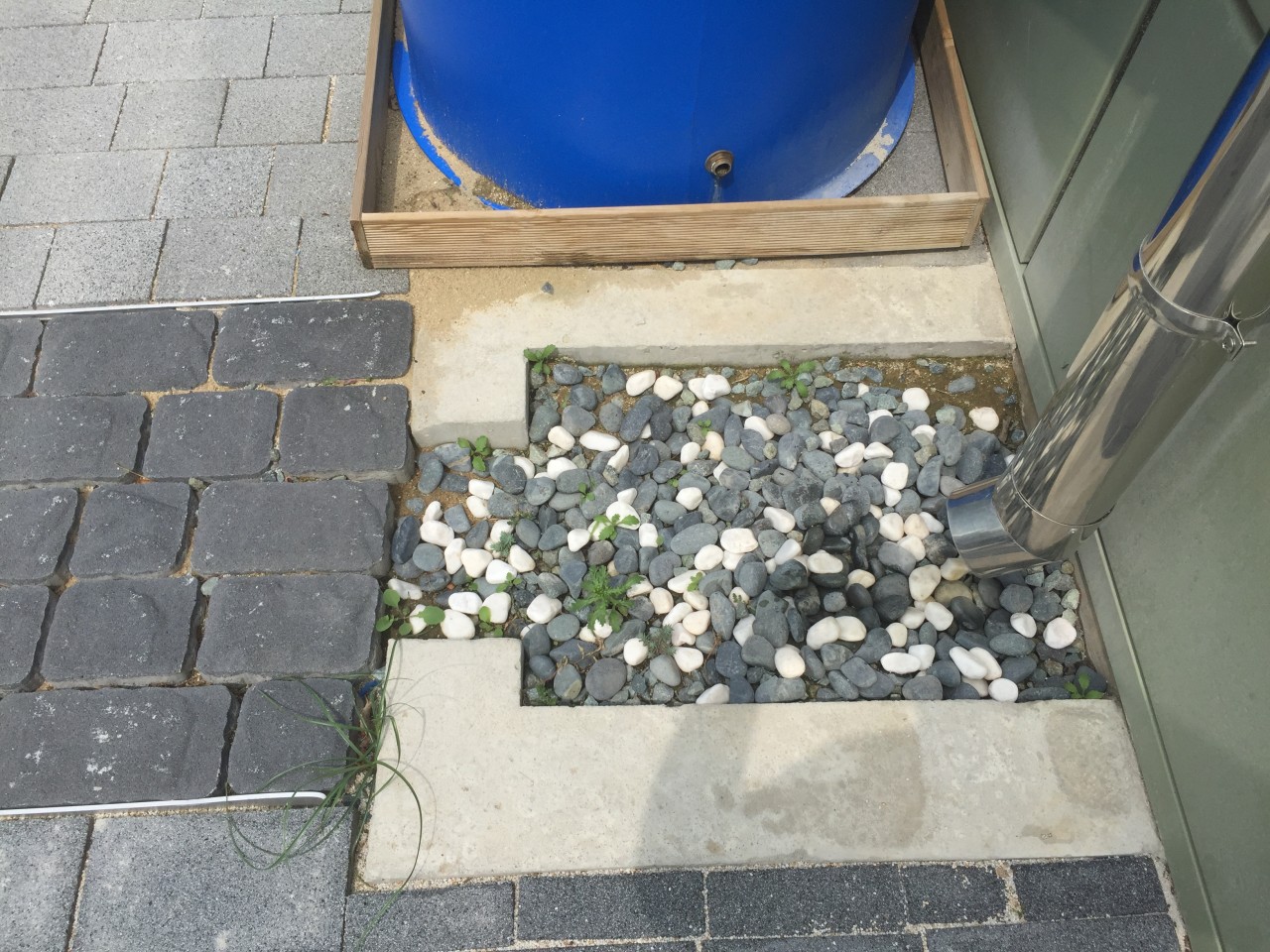
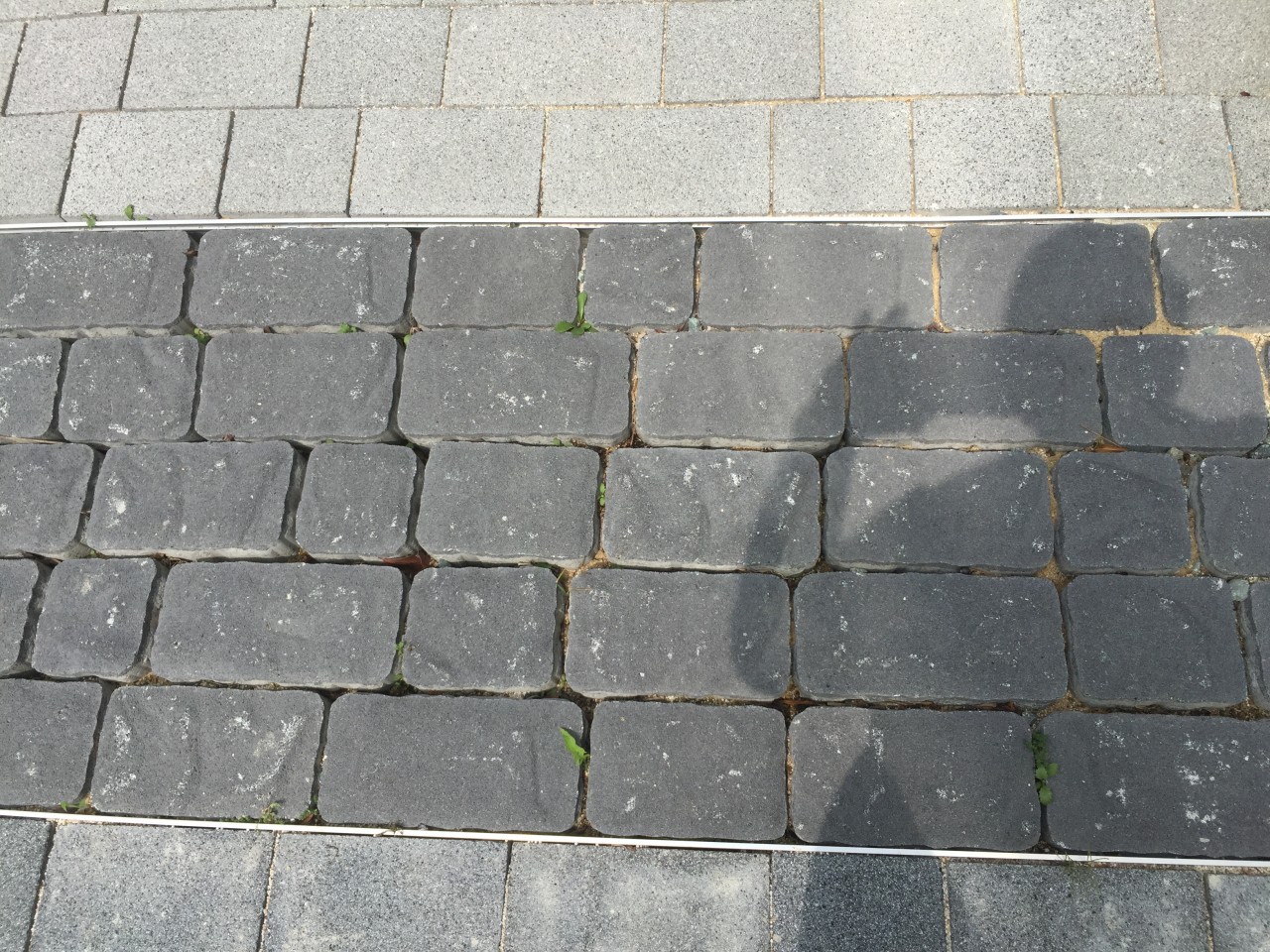
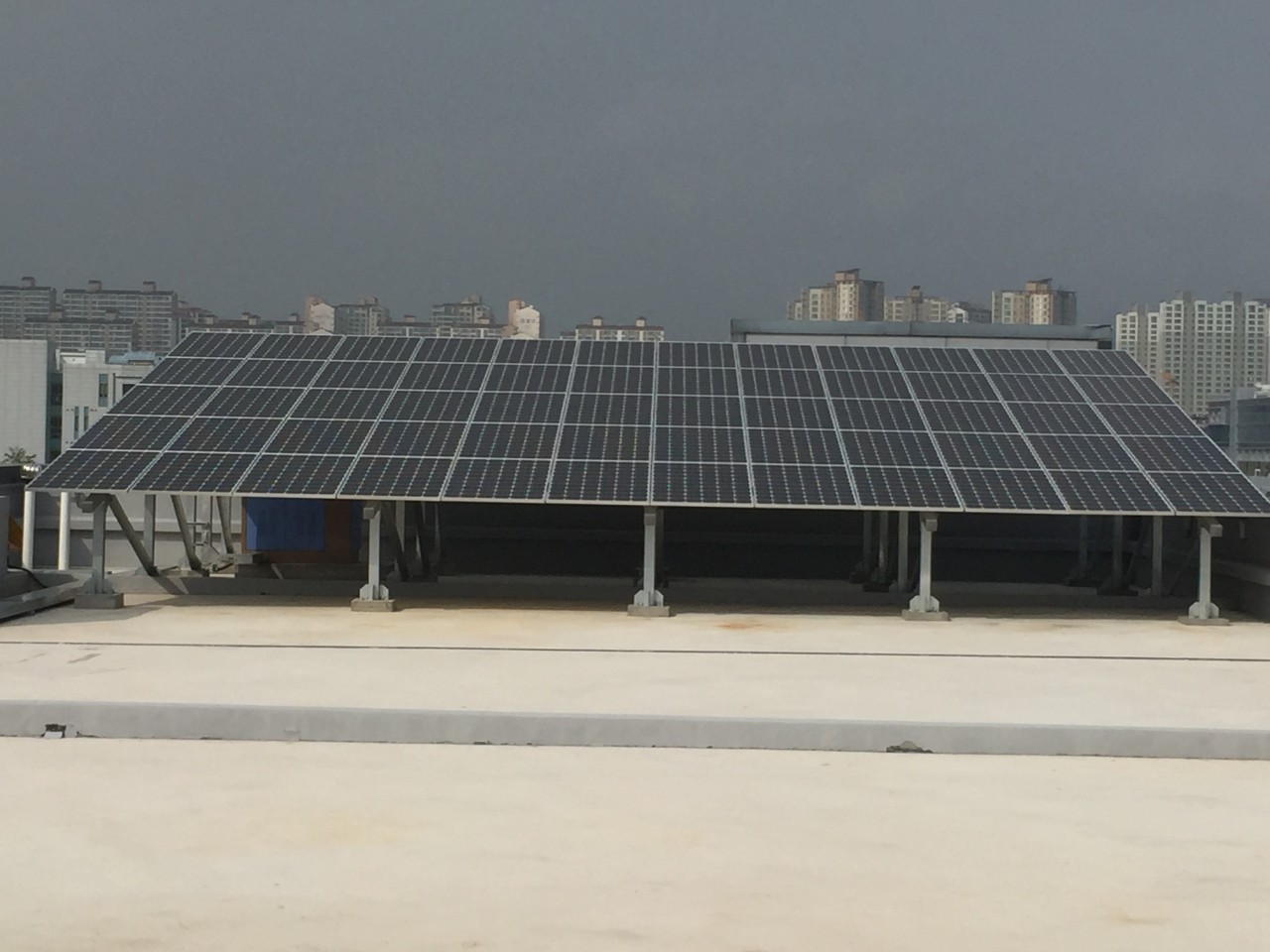
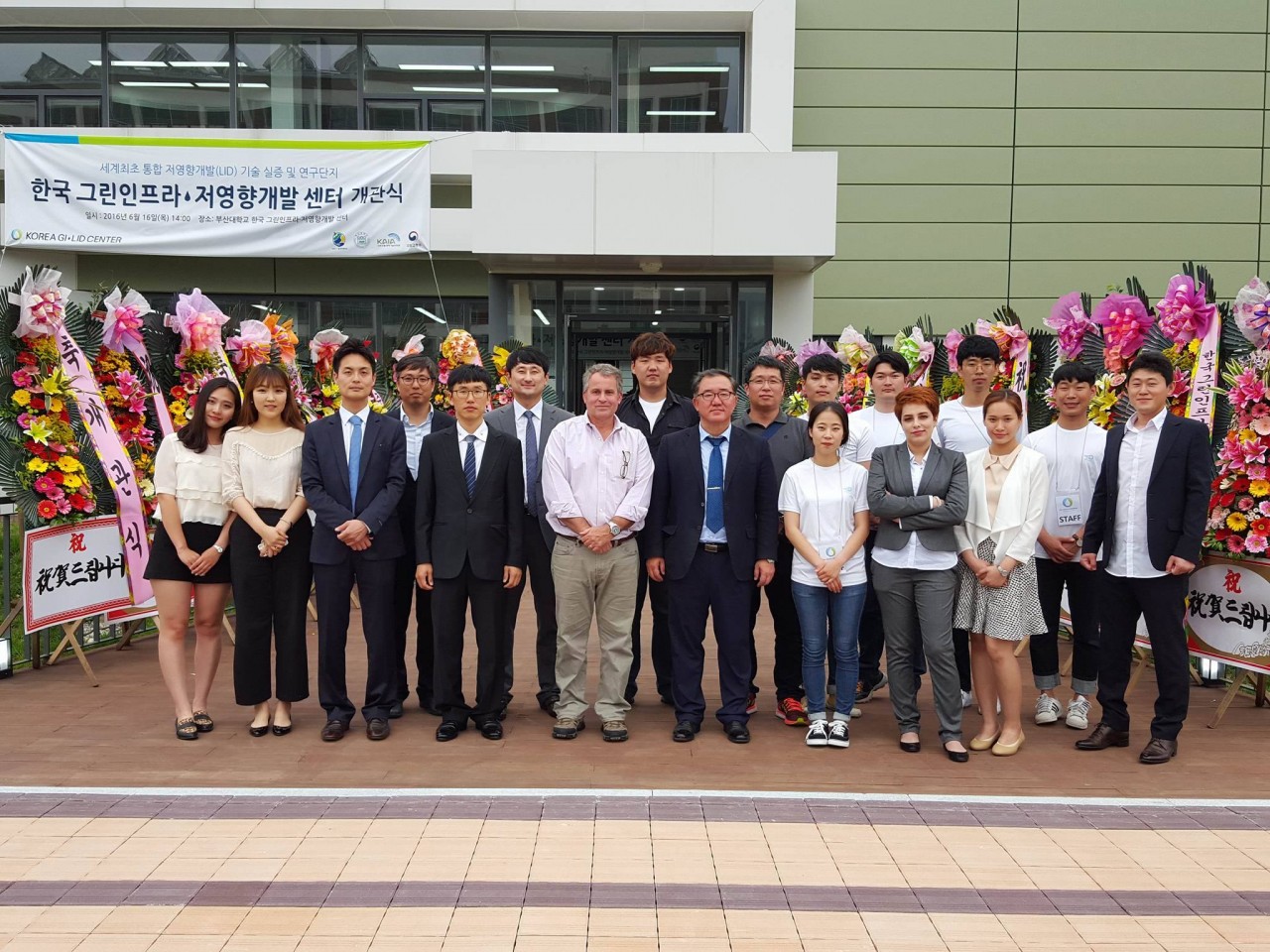

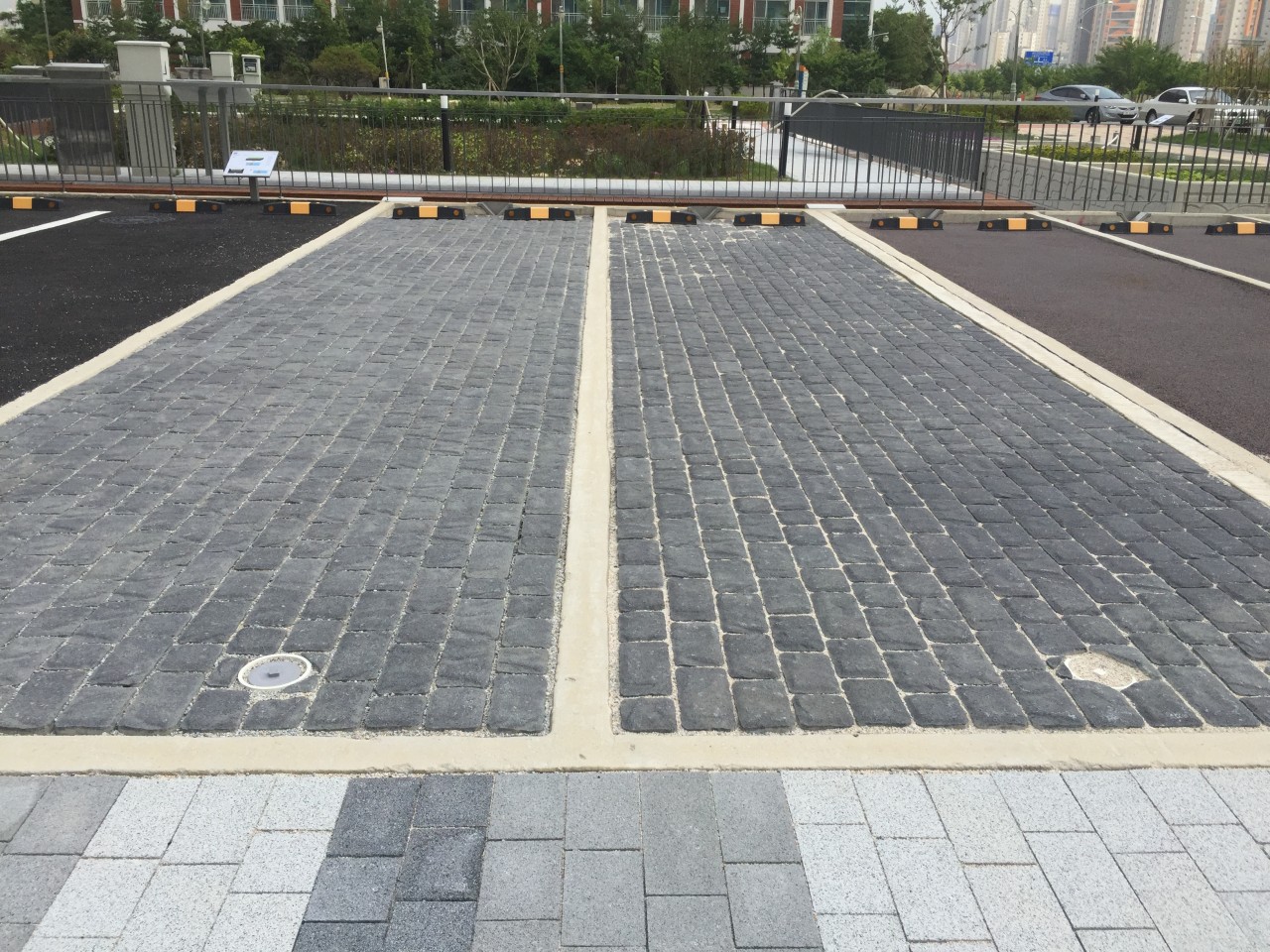
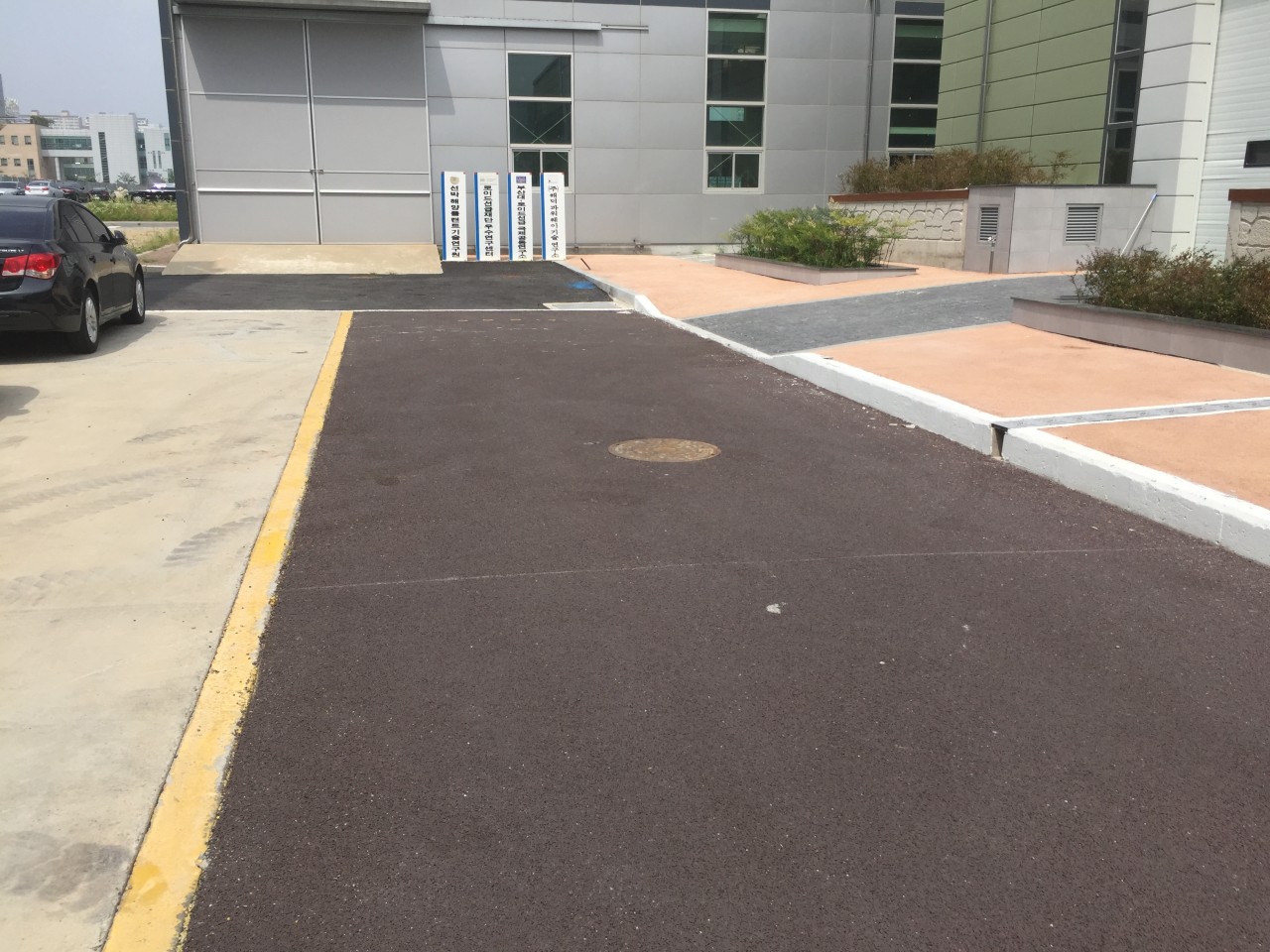
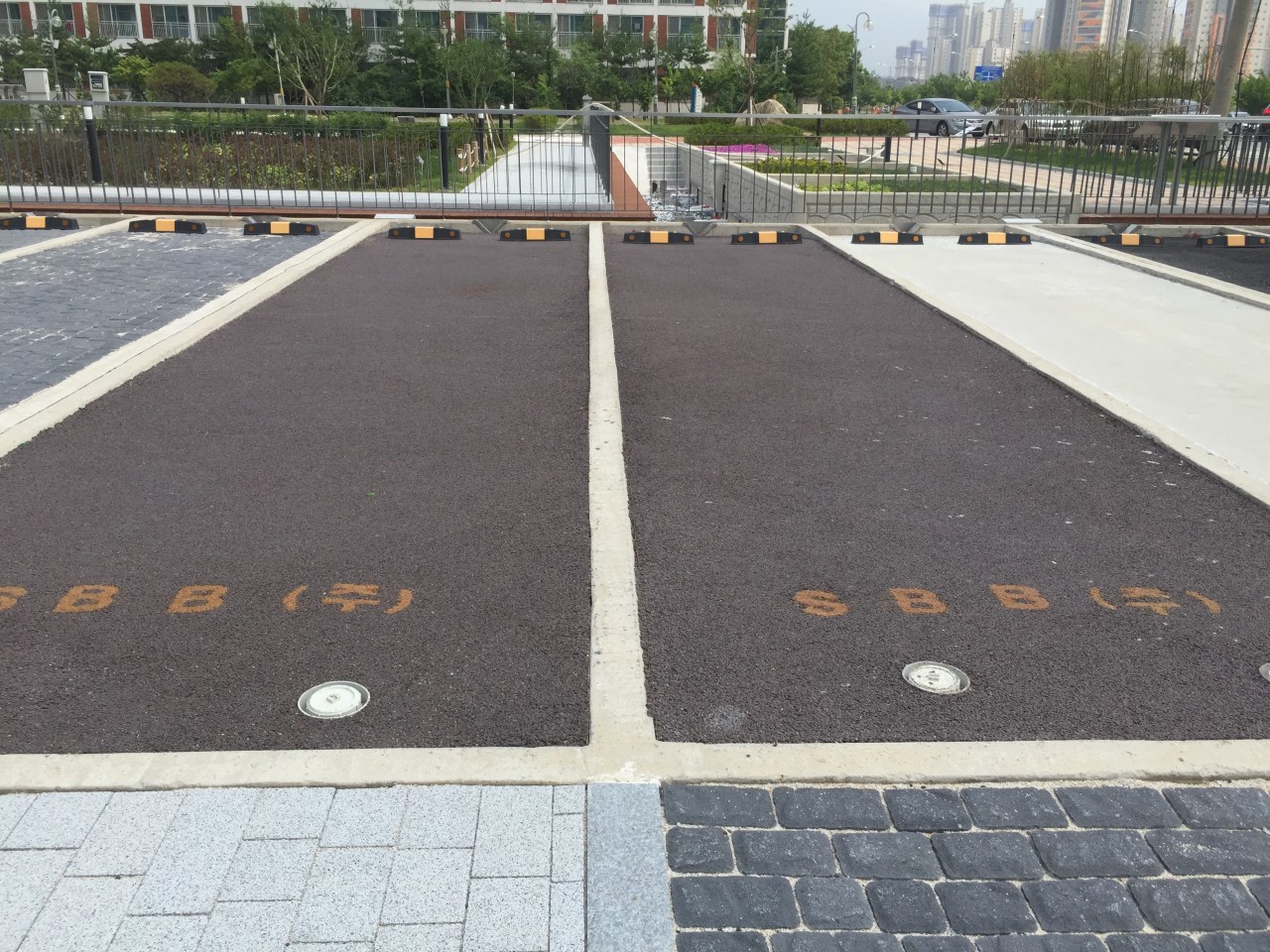
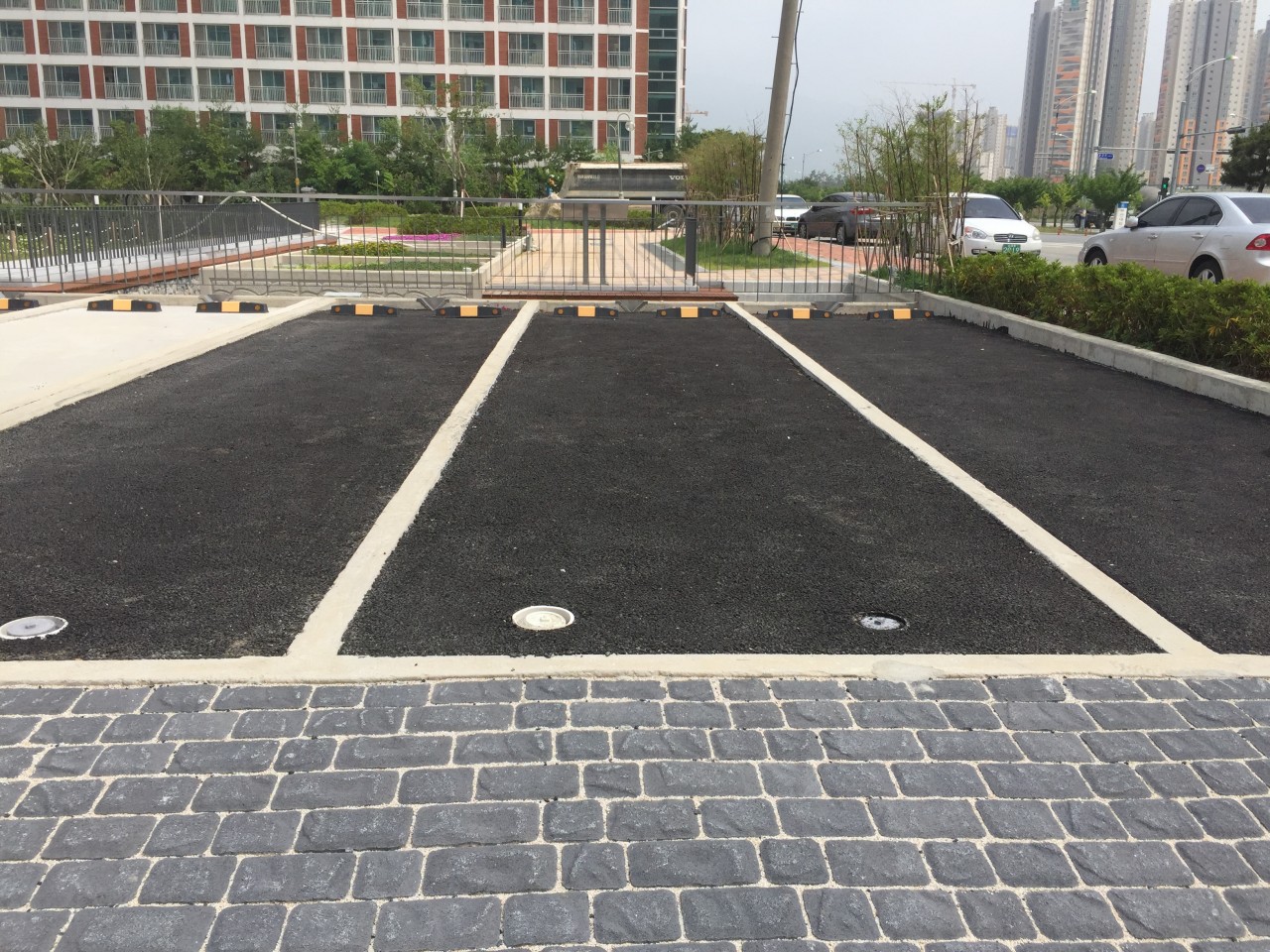
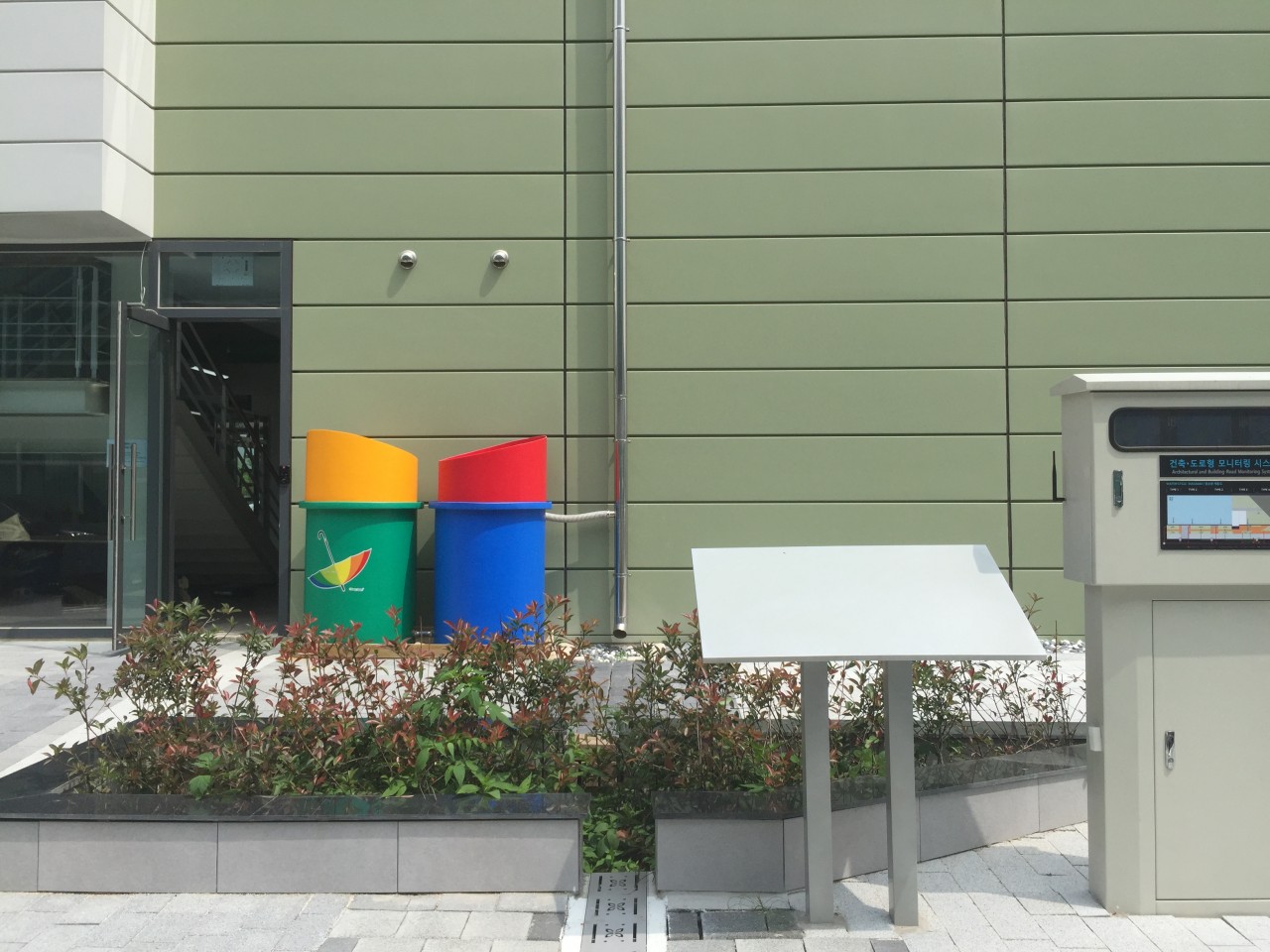
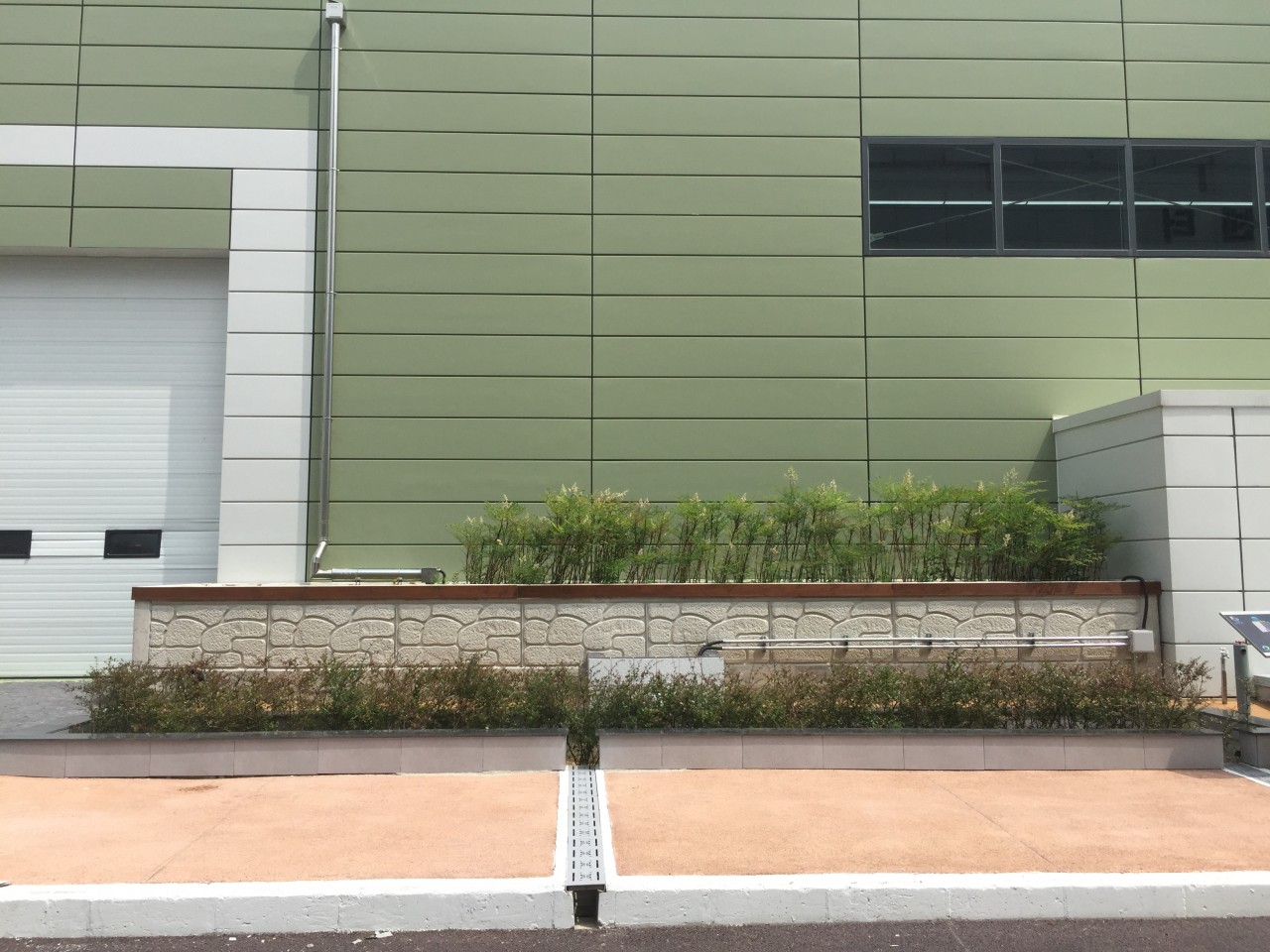
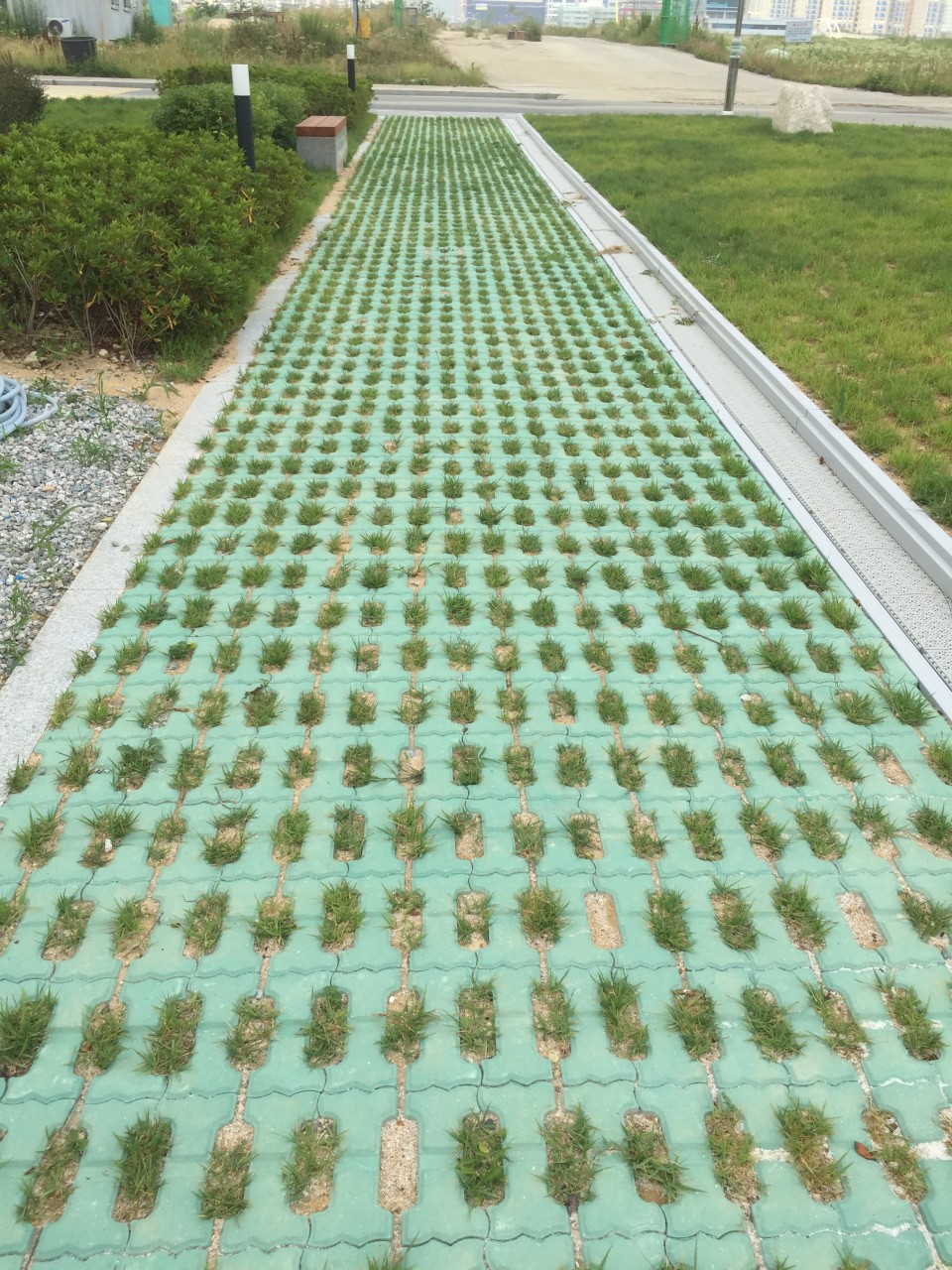
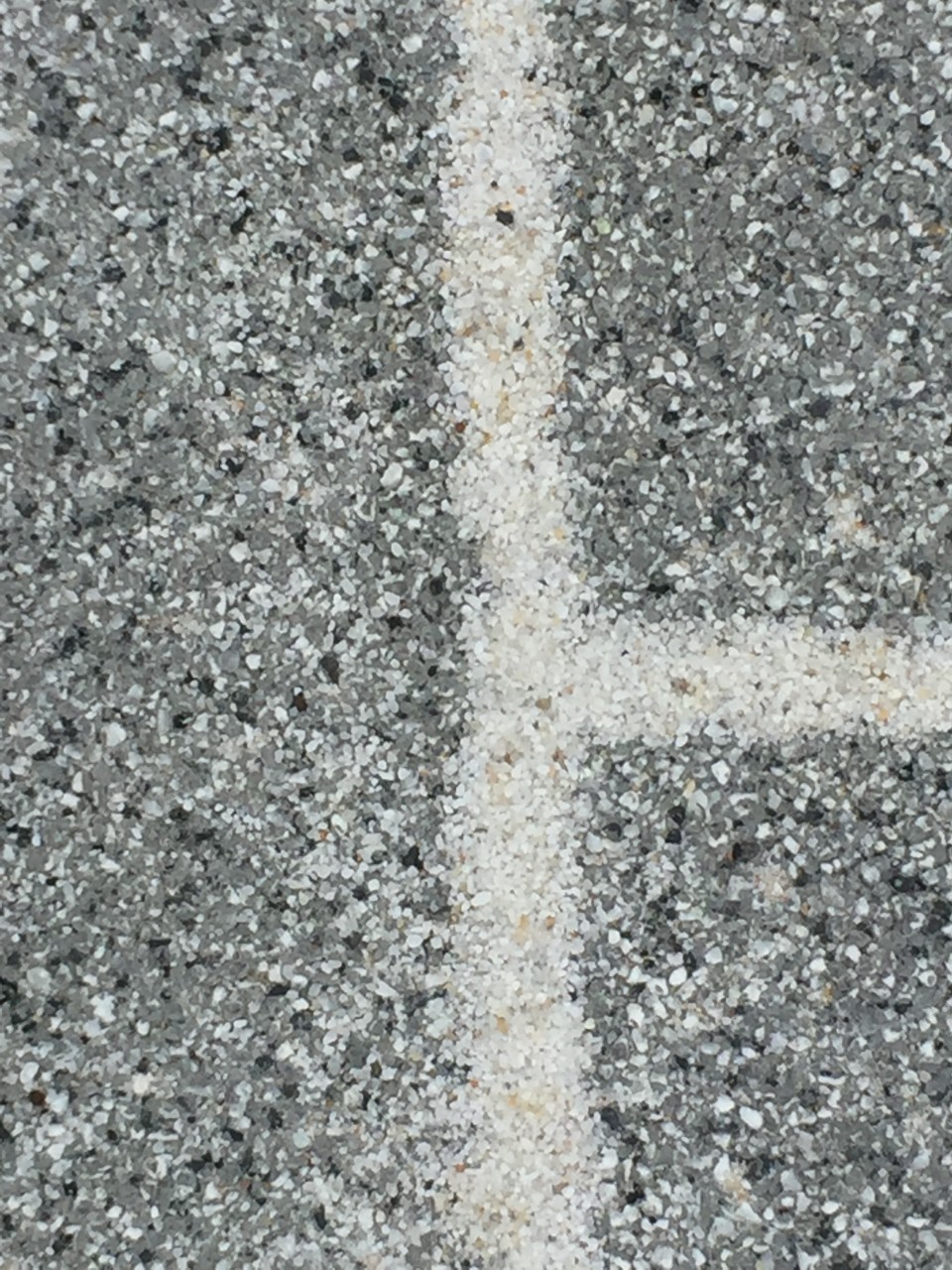
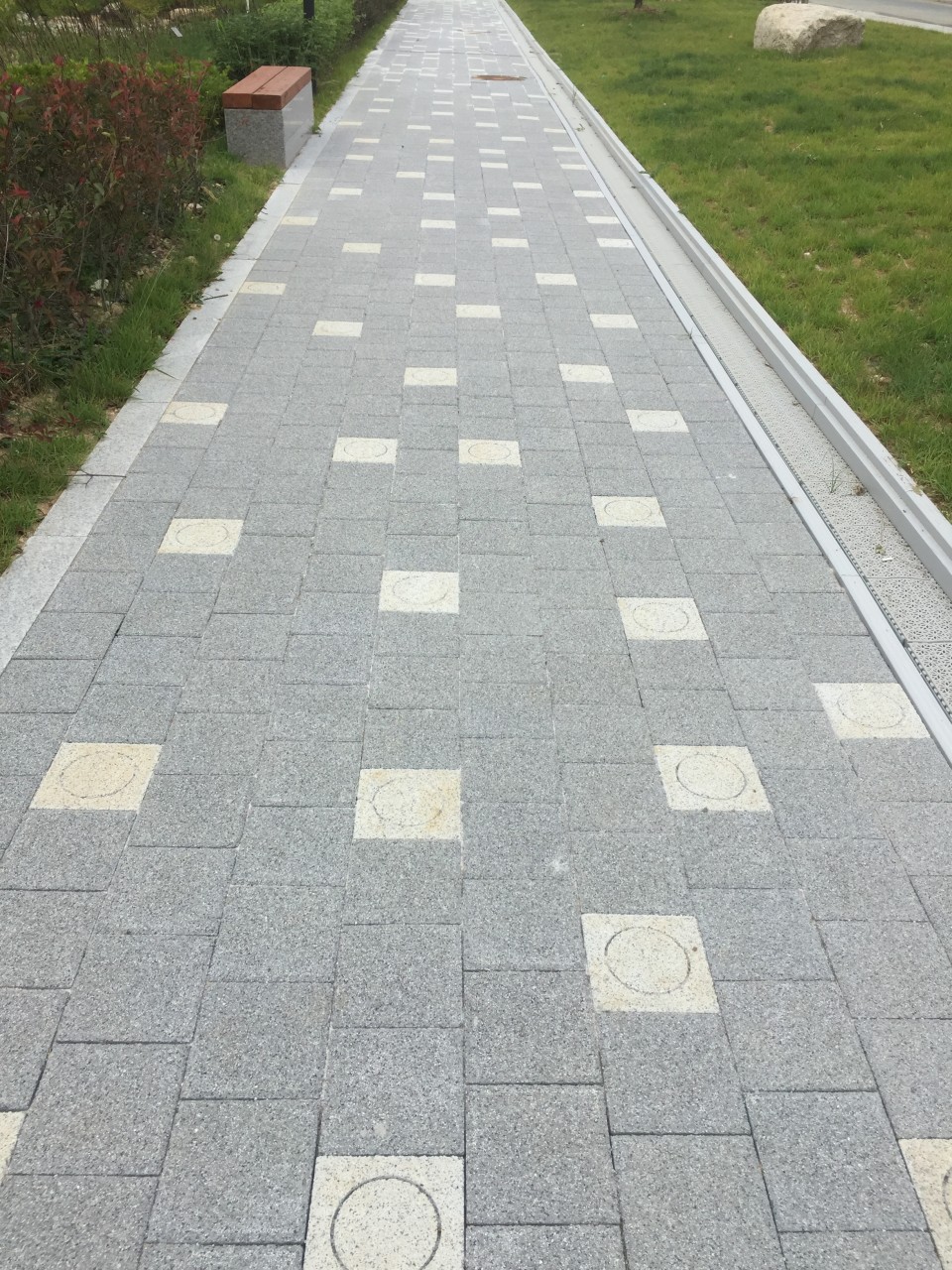
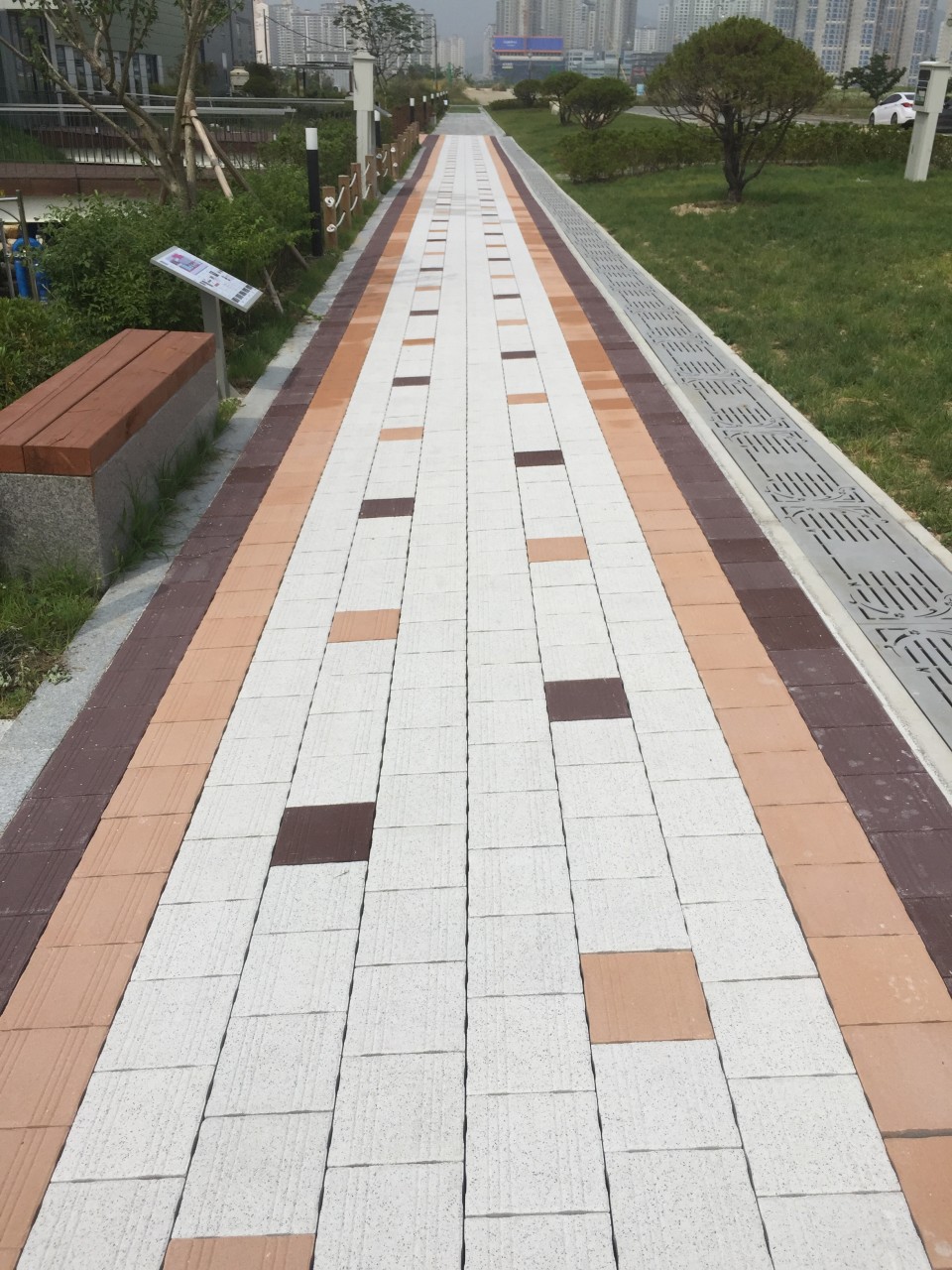
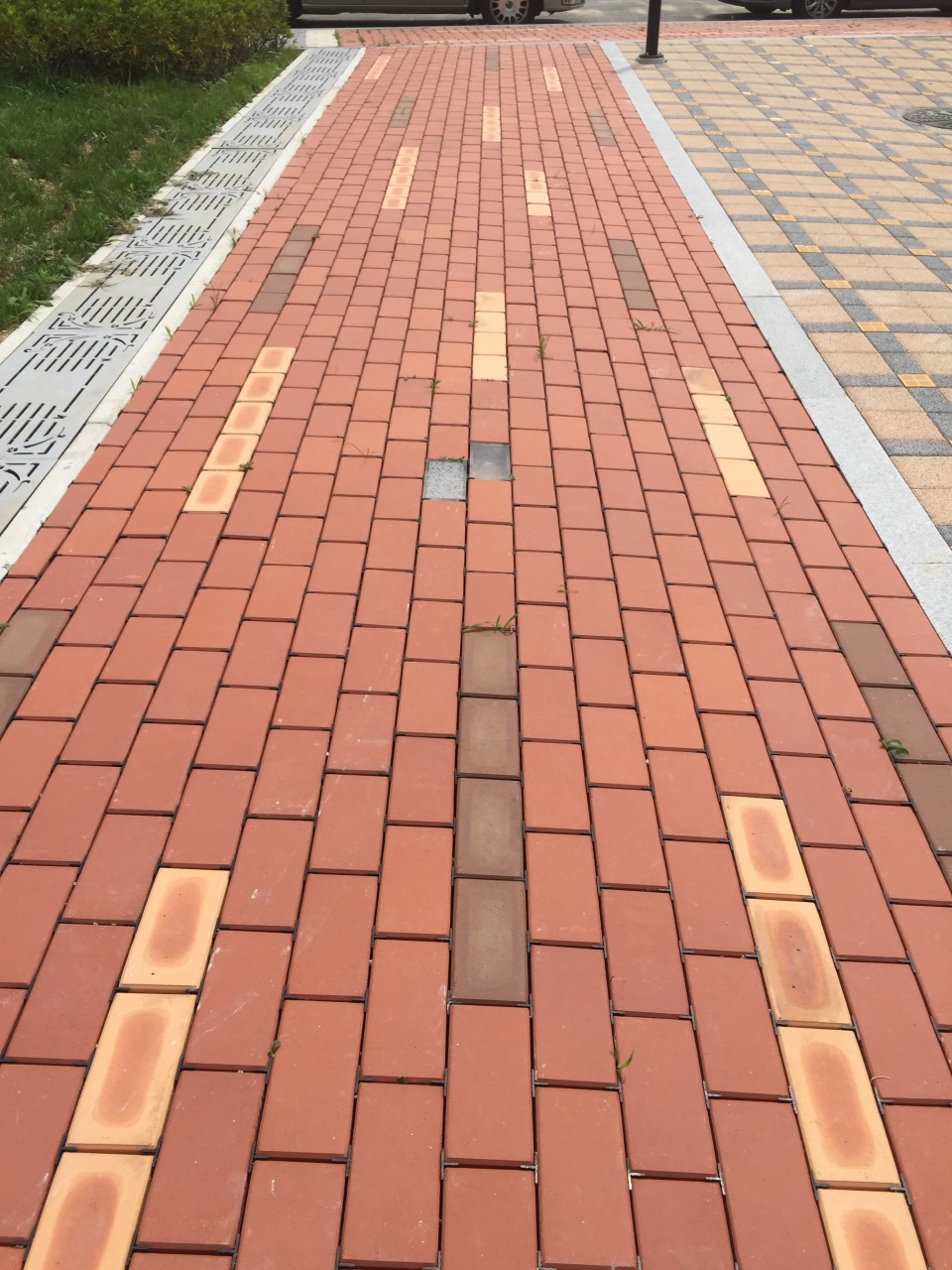
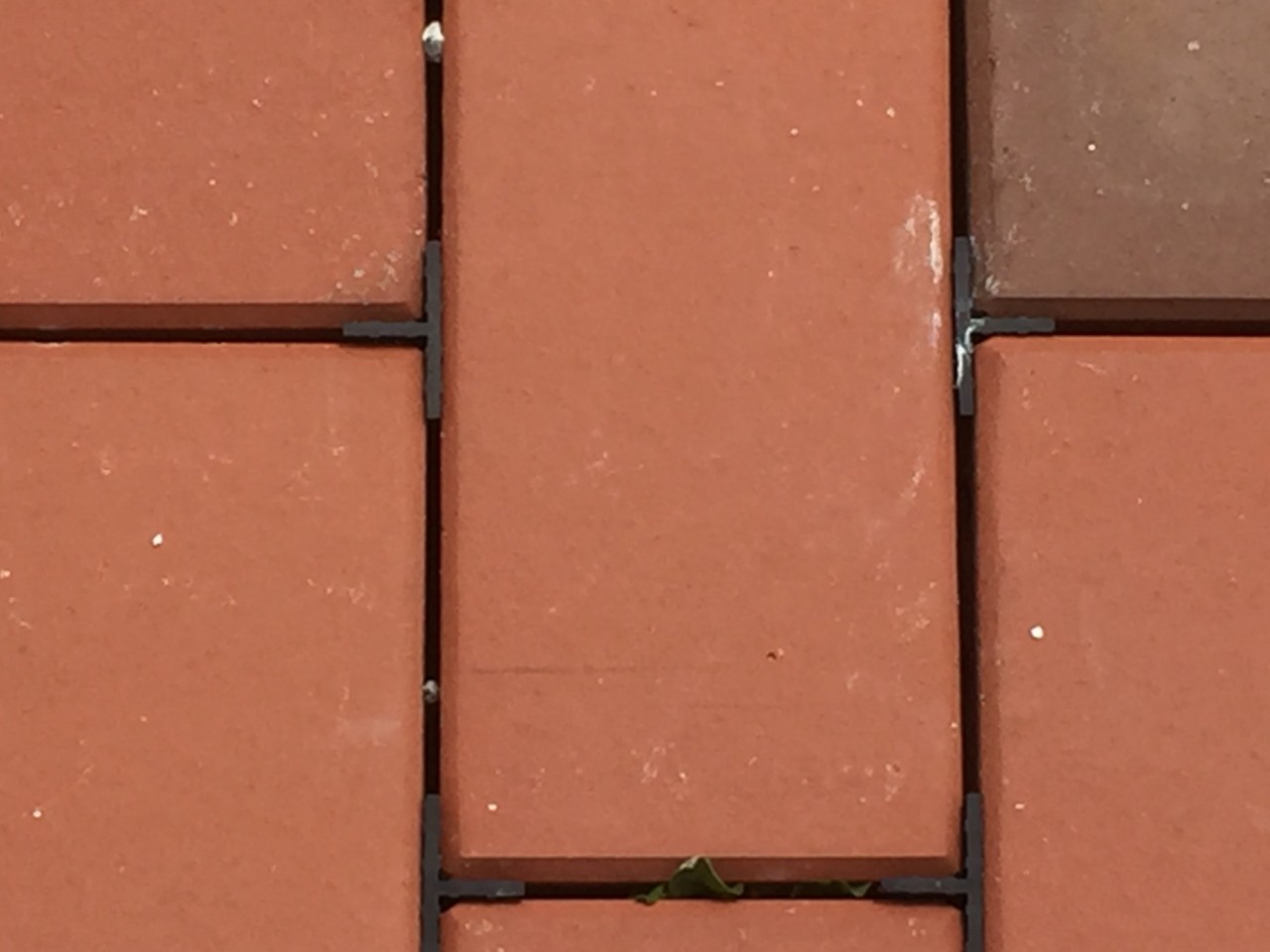
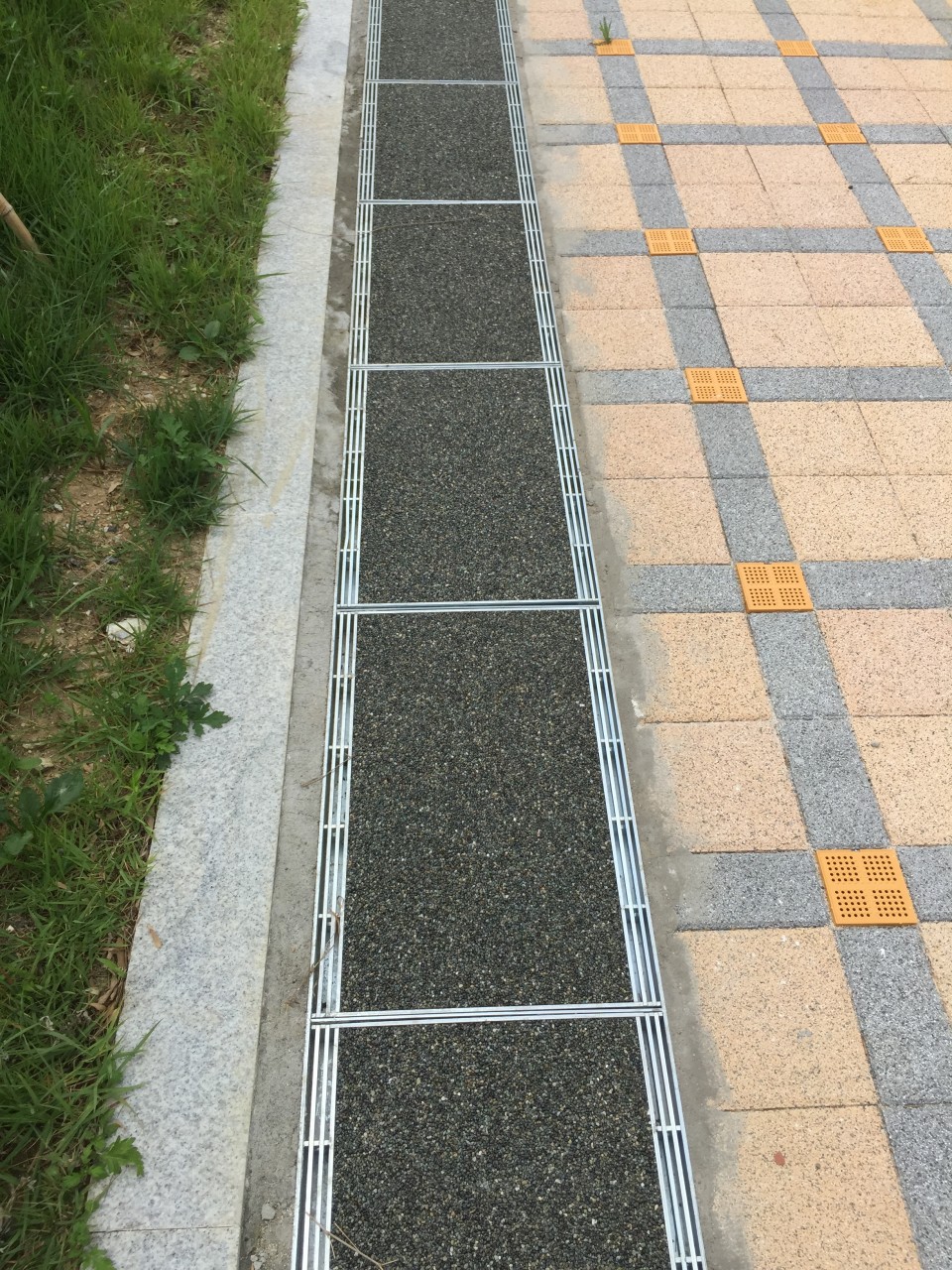
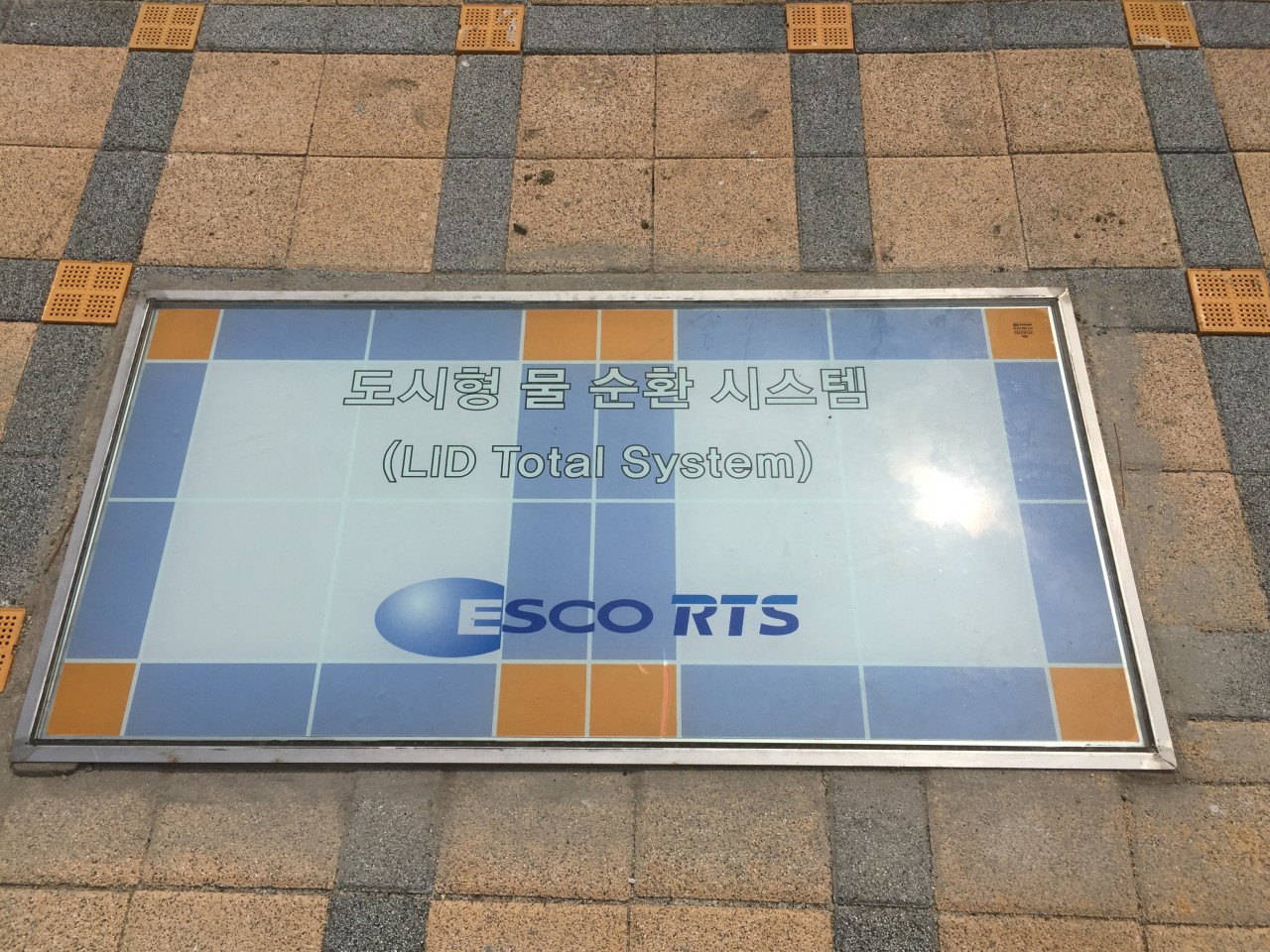
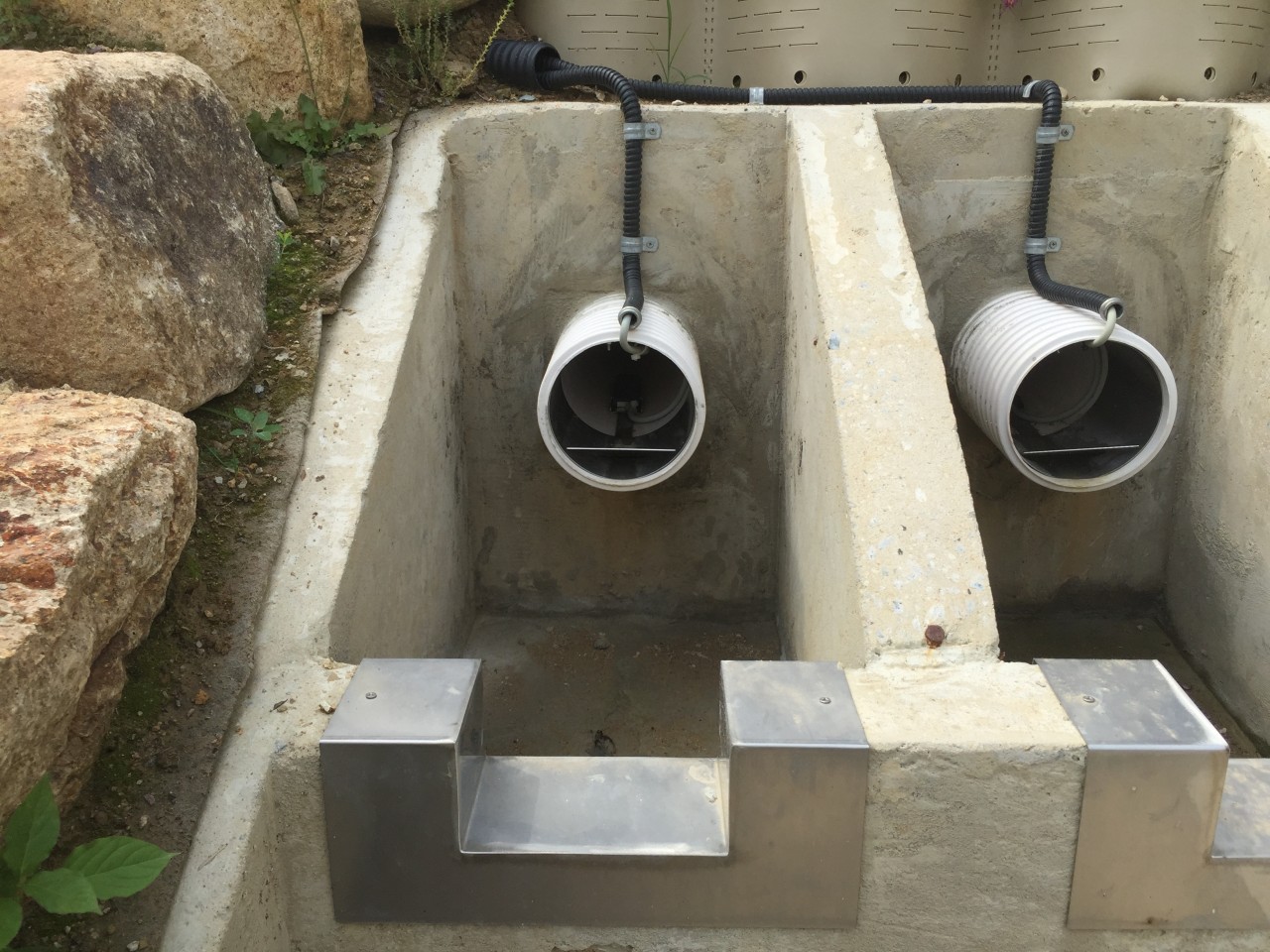
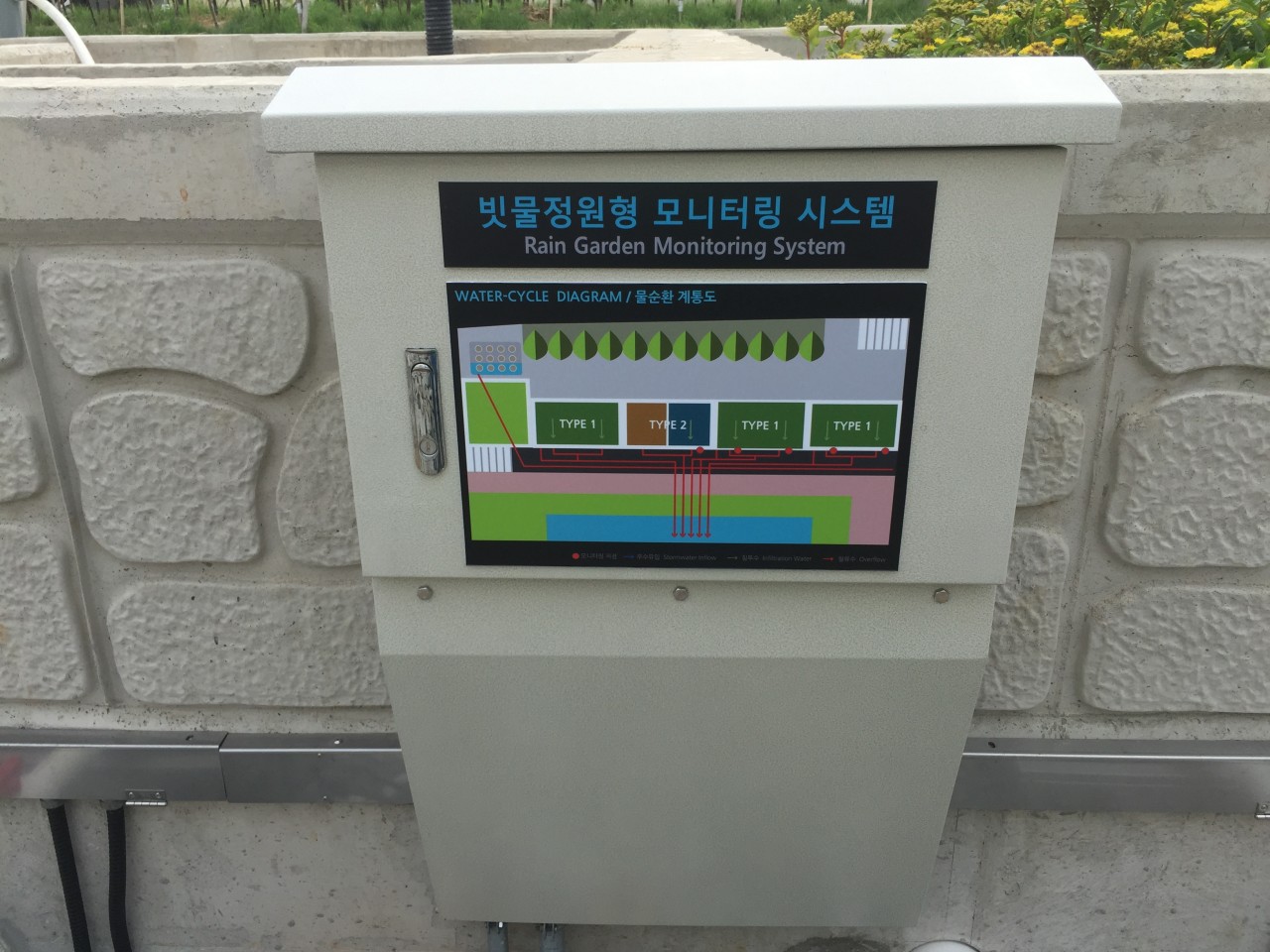
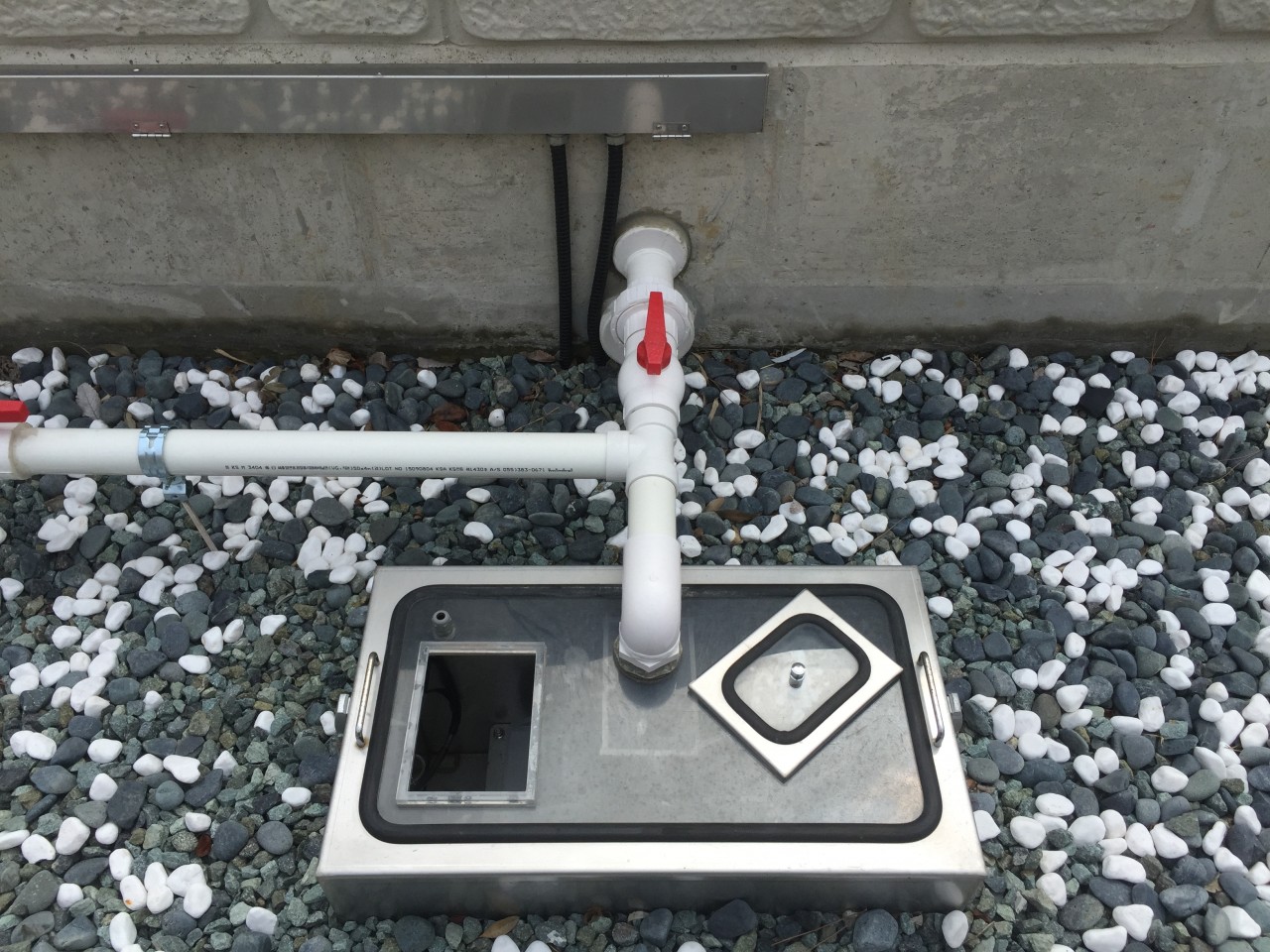
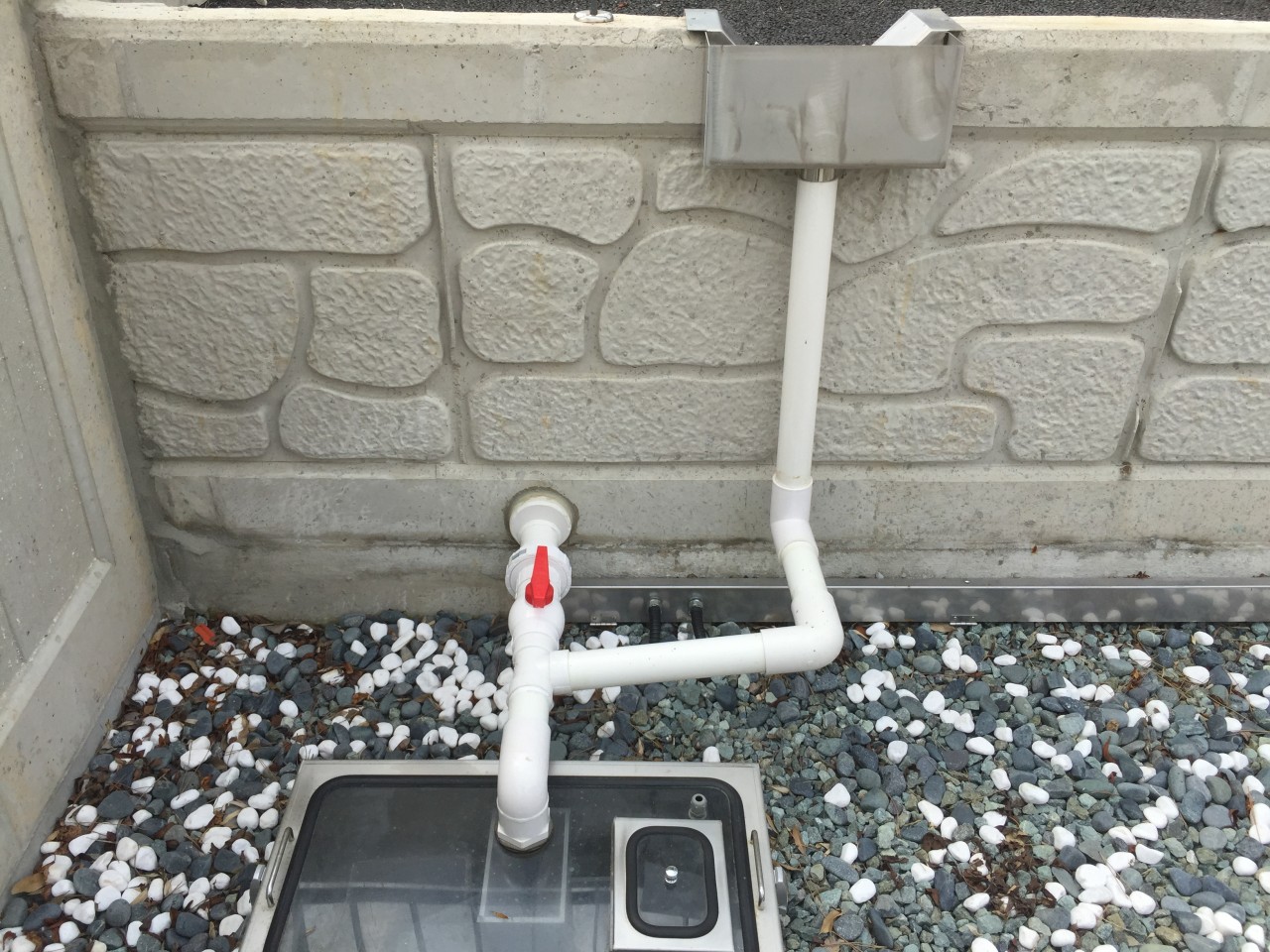
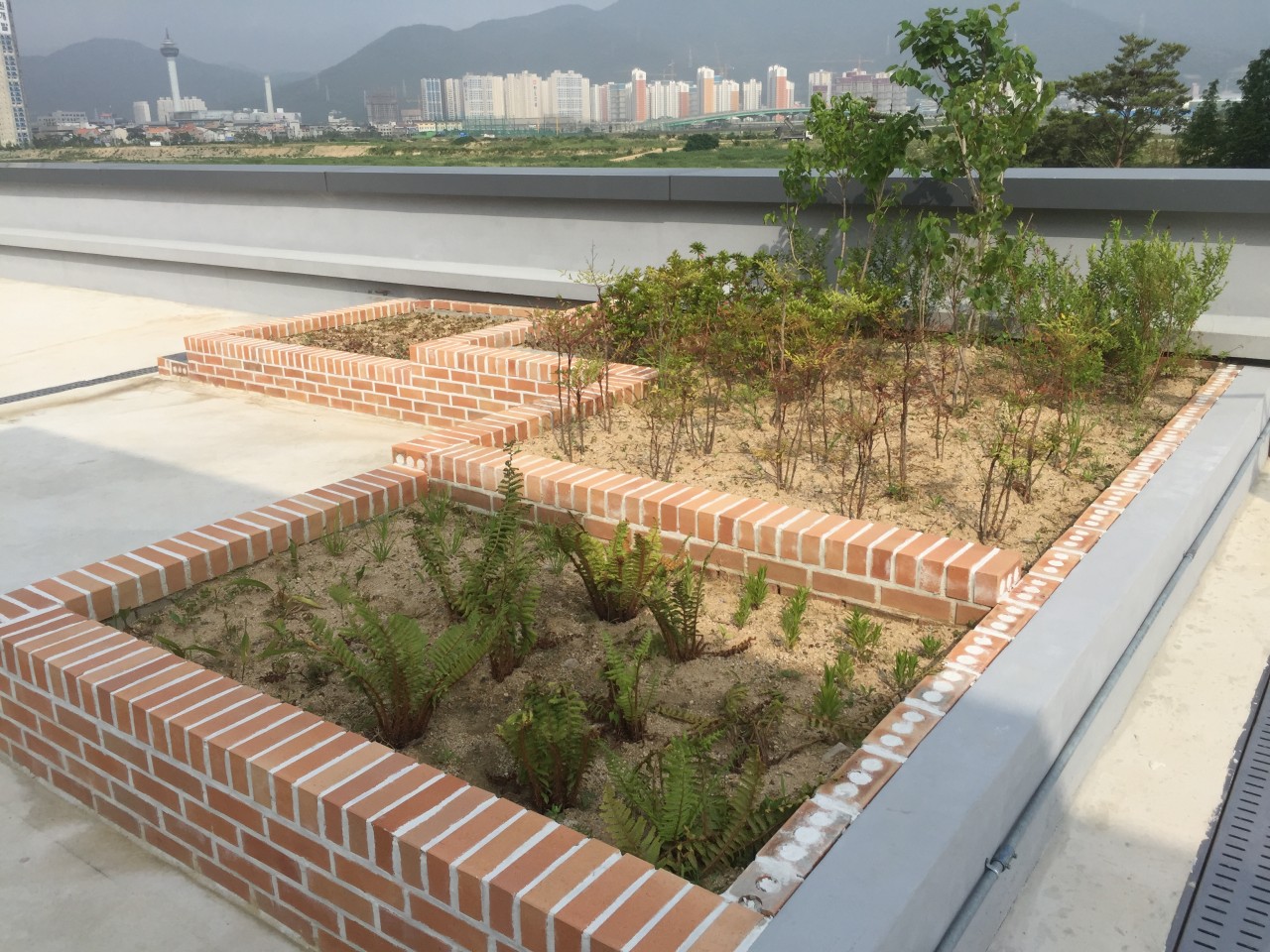
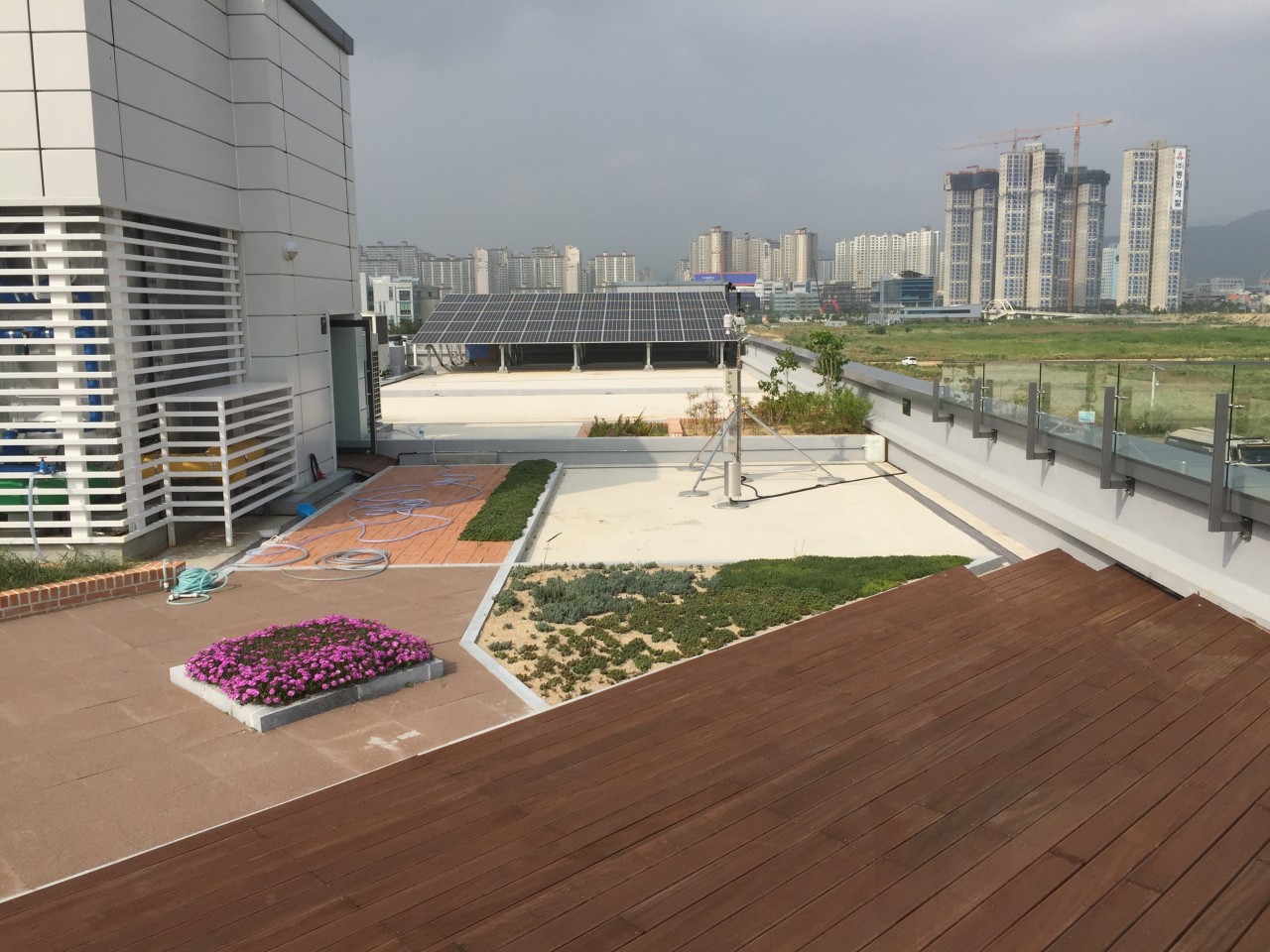
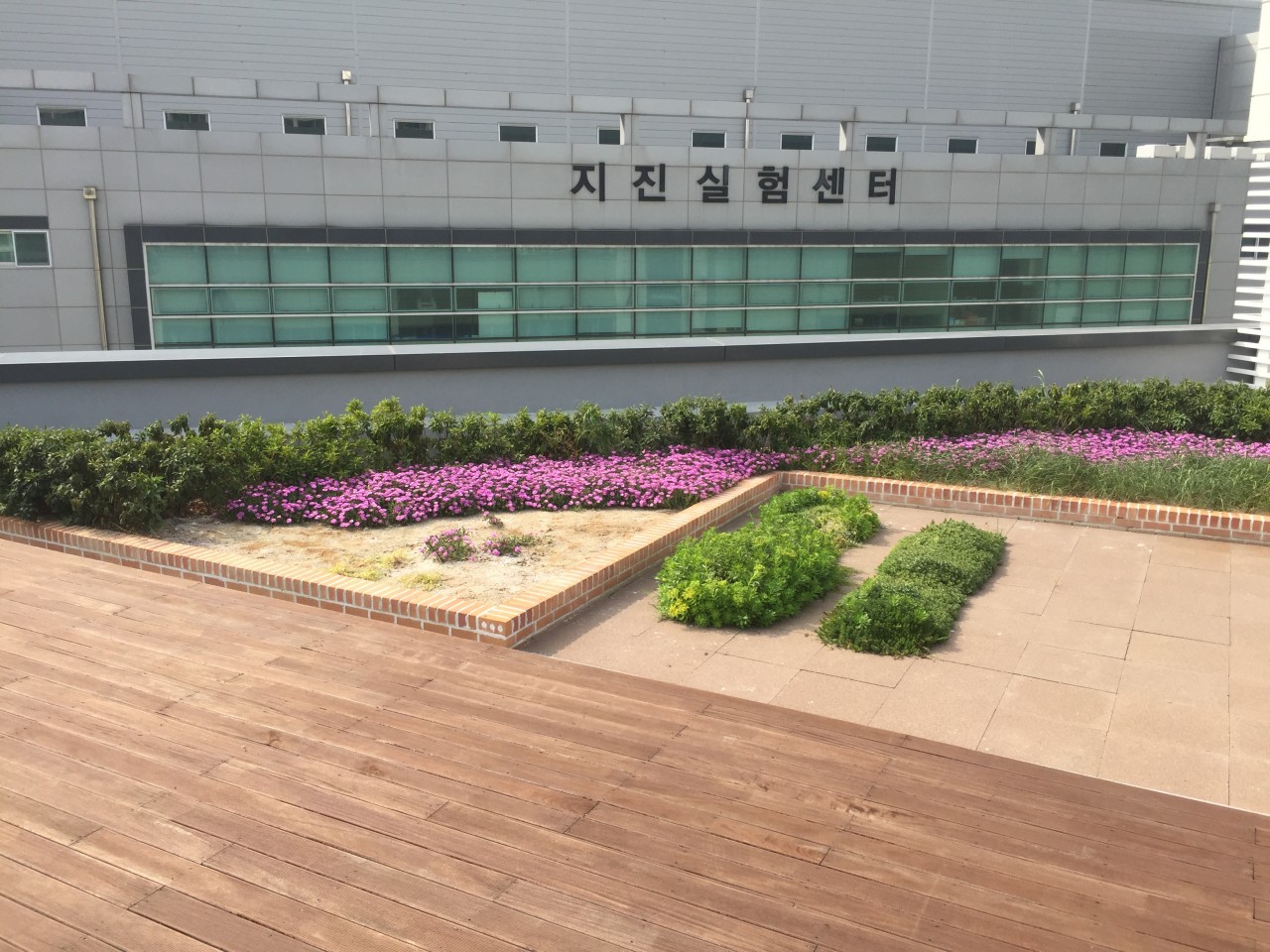
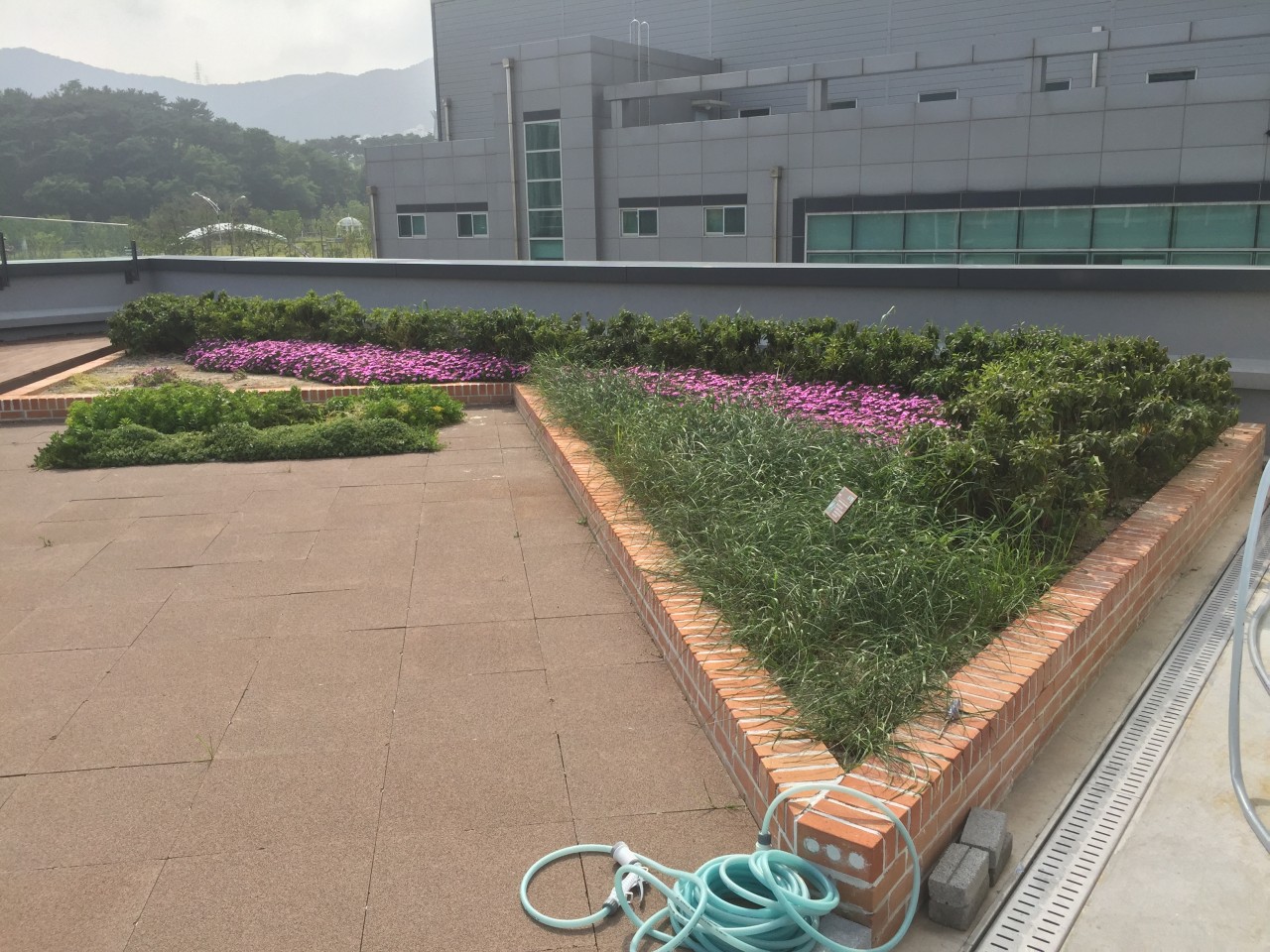
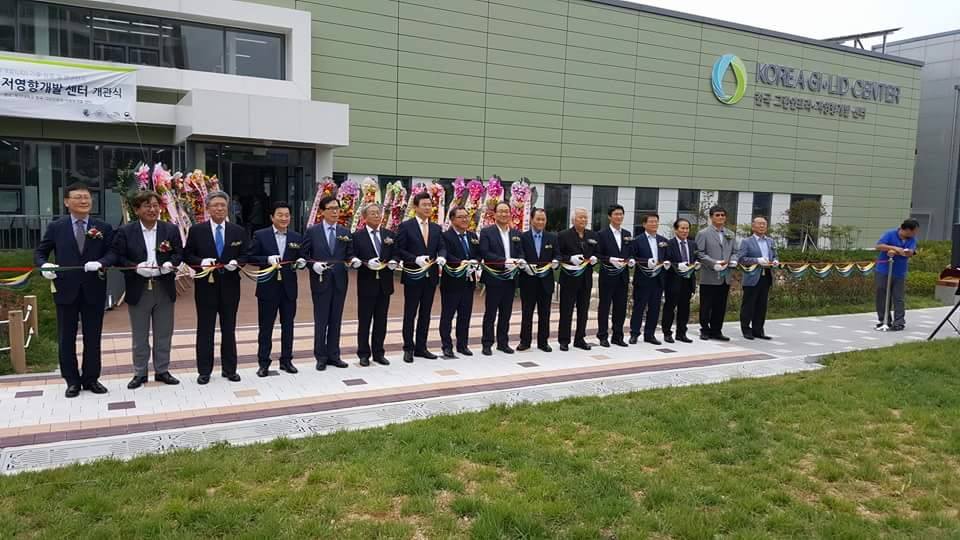
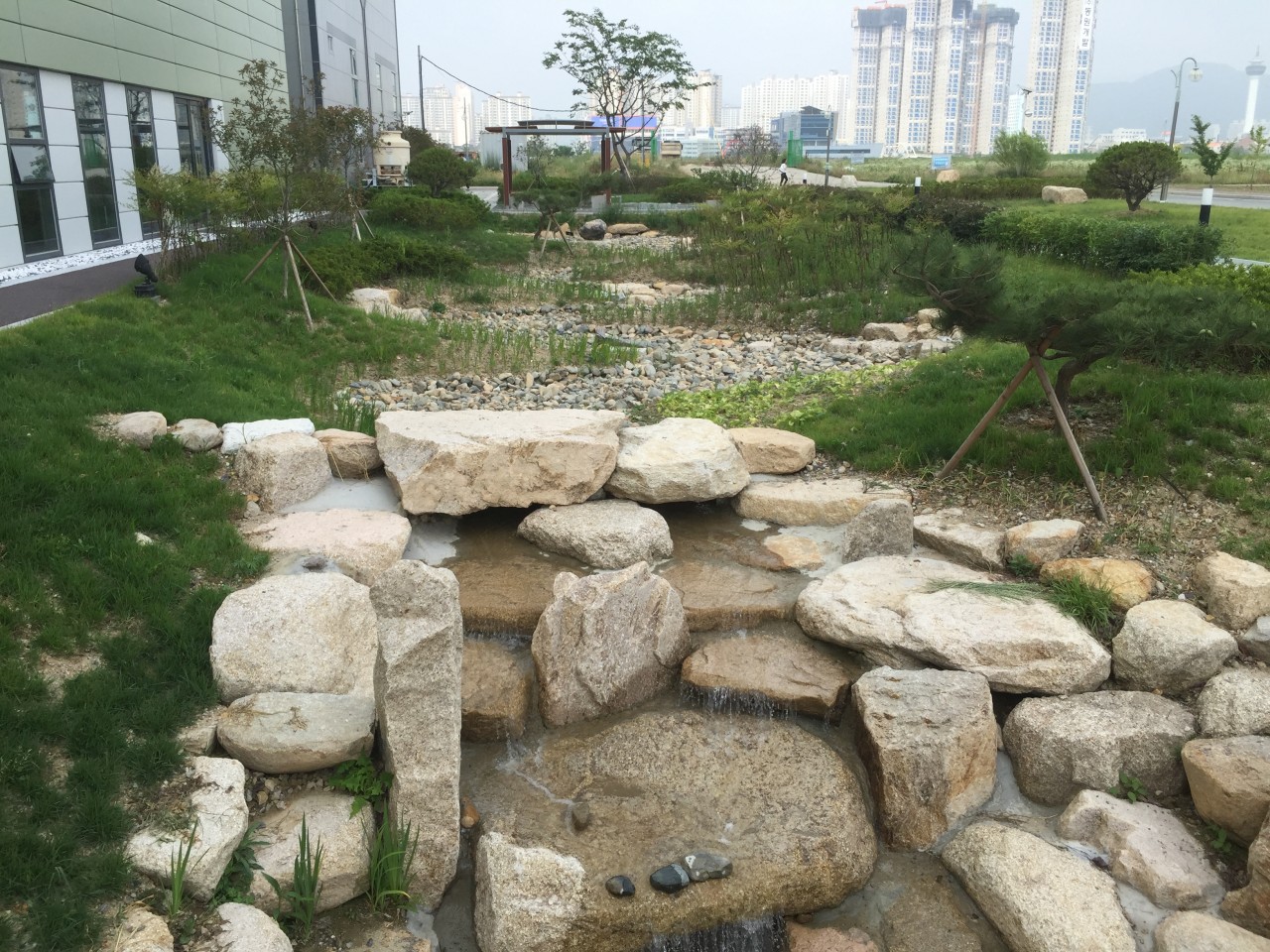
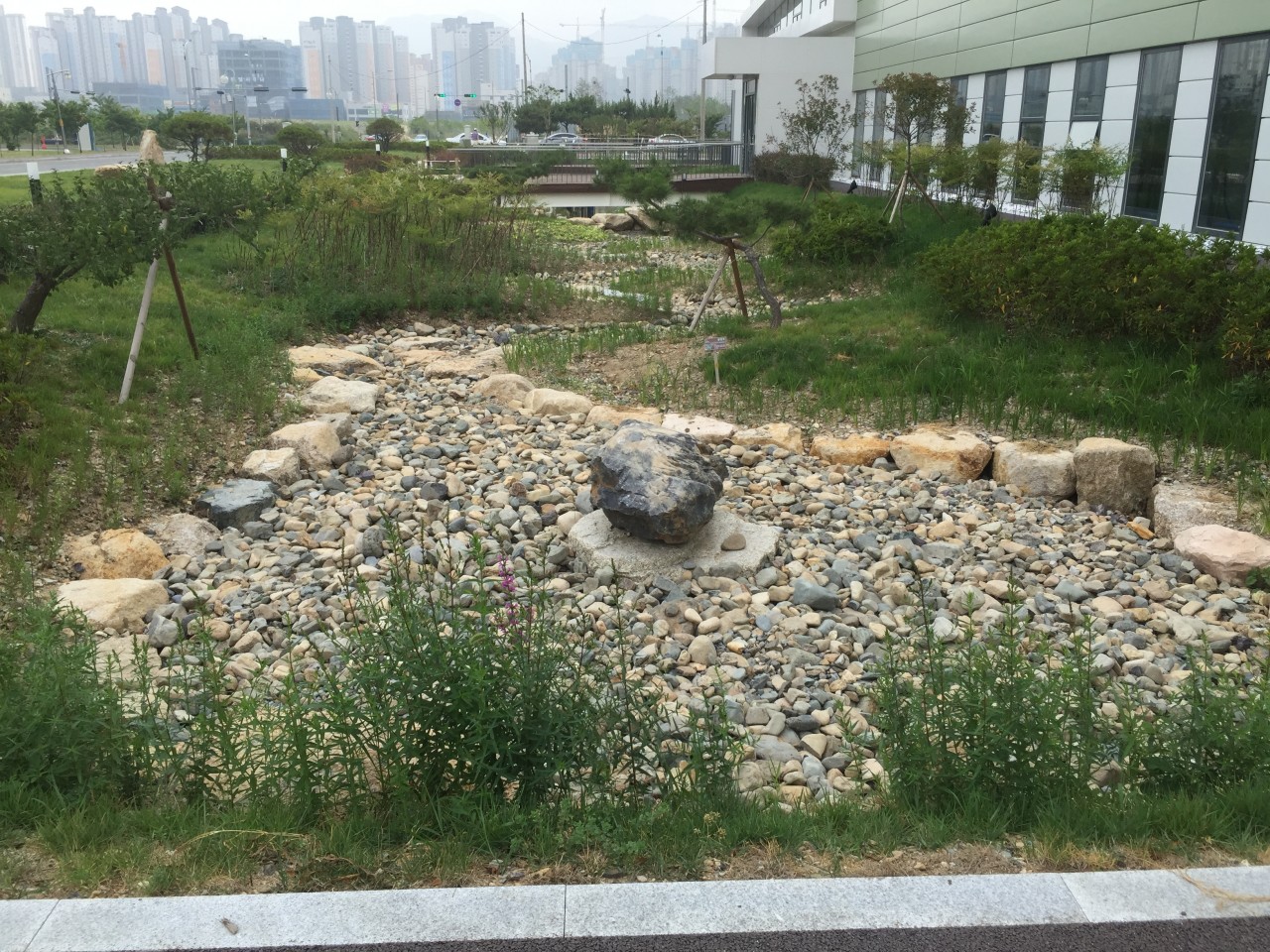
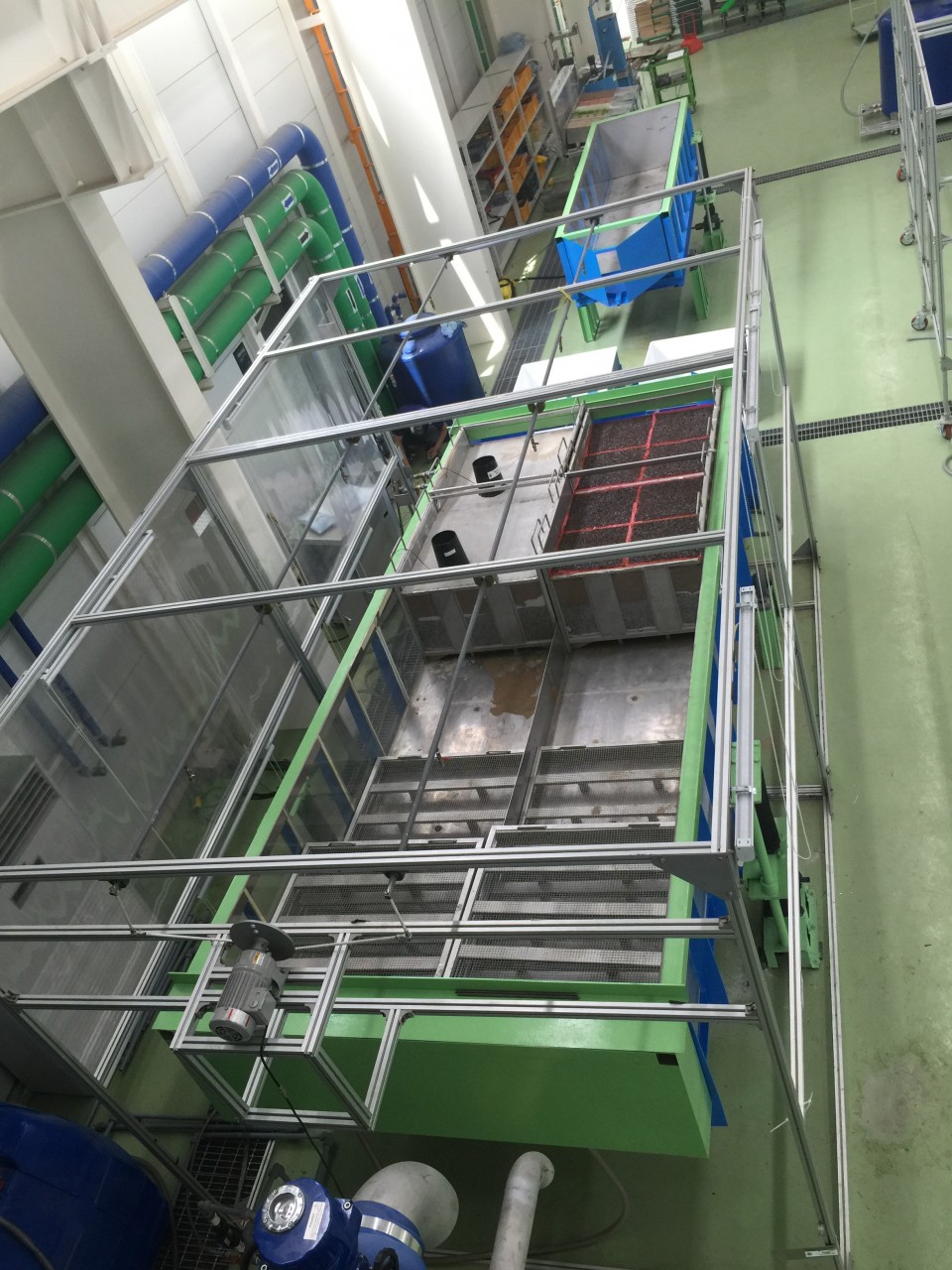
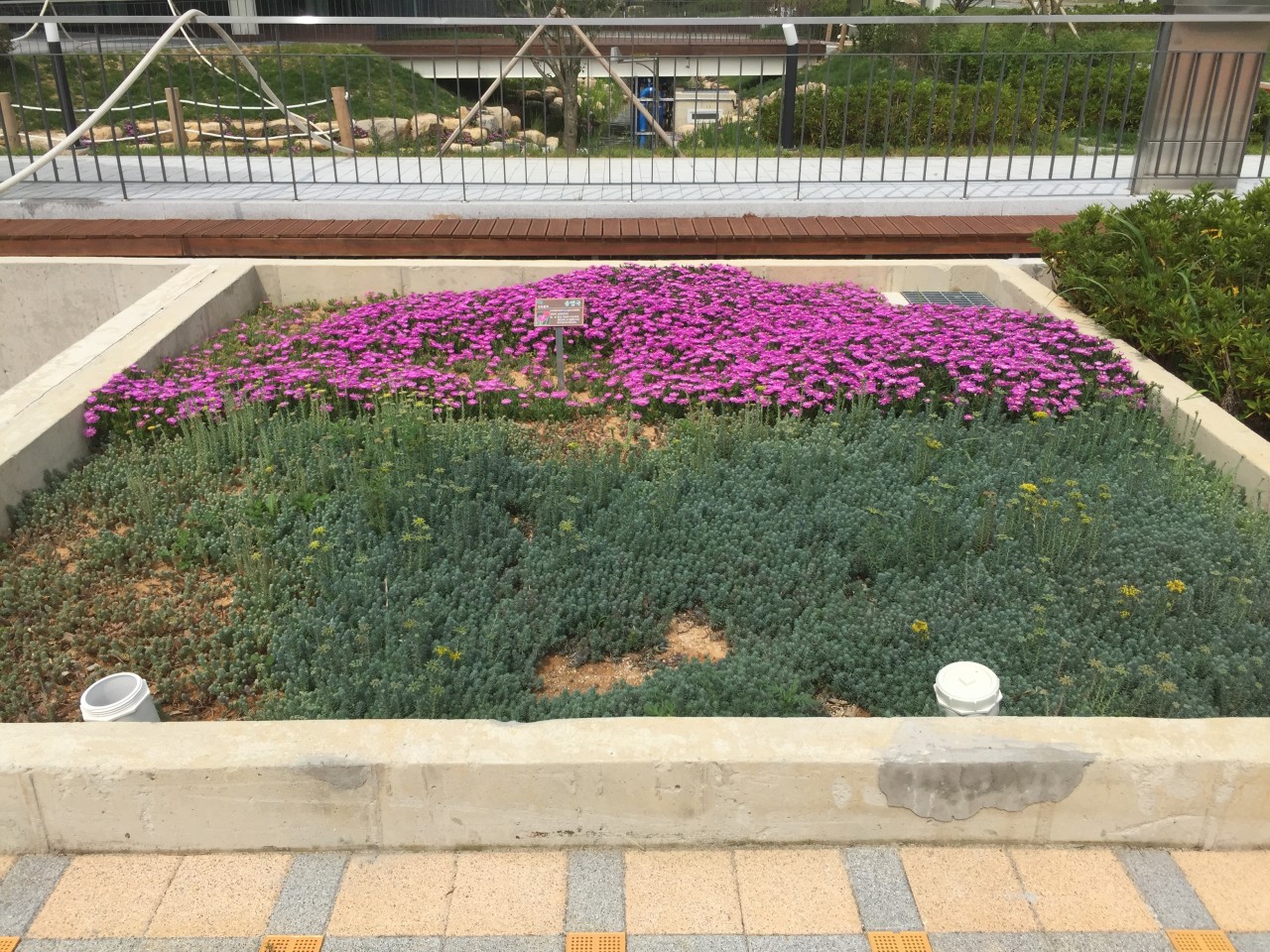
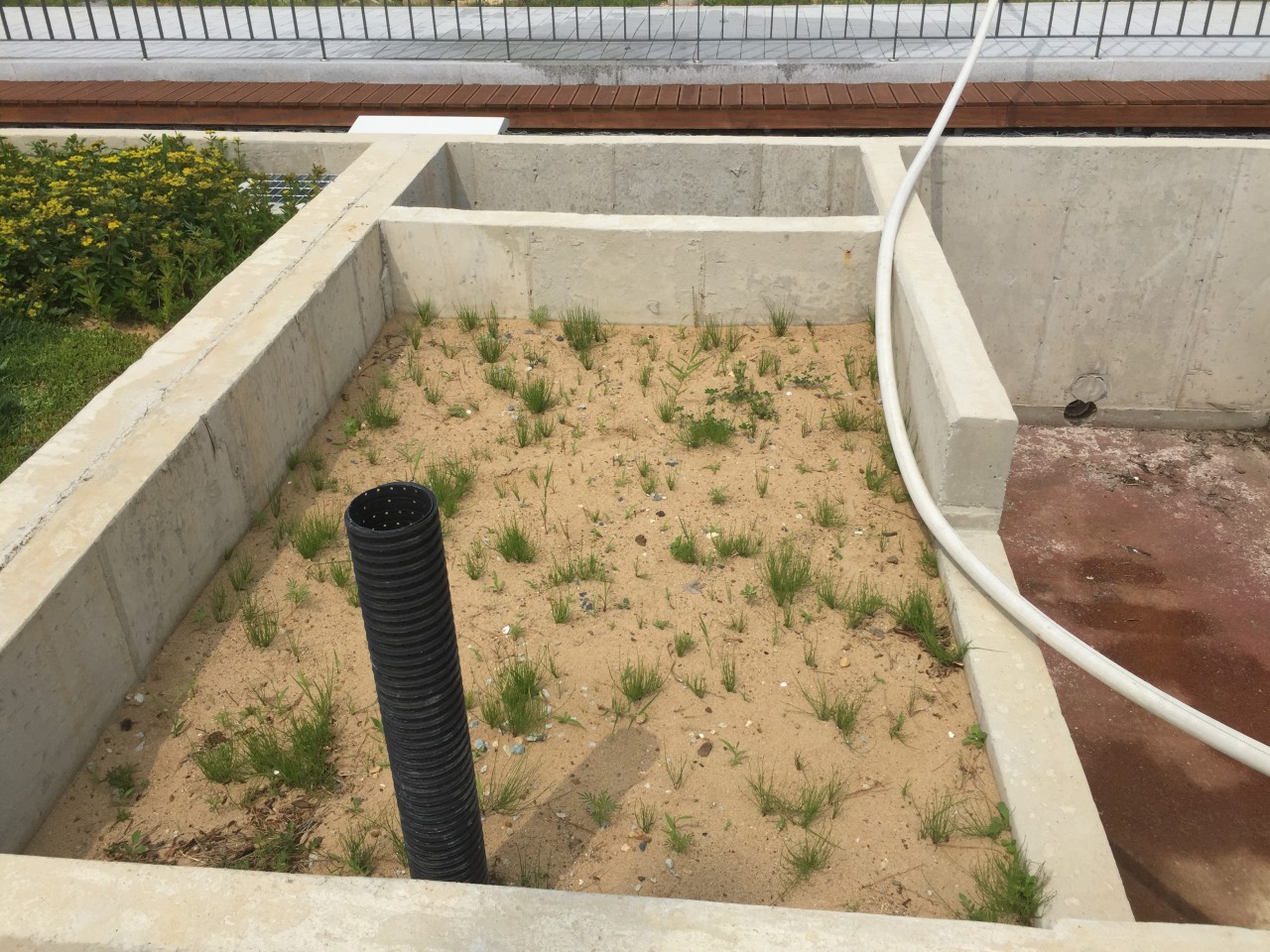
Korean GI & LID Research Facility
Yangsan Campus of Pusan National University
Steve was invited by Dr. Hyunsuk Shin of Pusan National University to attend the official opening of the Korean GI & LID Research Facility at the Yangsam Campus of Pusan National University as well as inspect the facility which was designed solely to evaluate Green Infrastructure (GI) and Low Impact Development (LID) stormwater management systems. The official opening was held on June 16, 2016 and was attended by over 100 people, including many government officials as well as other university researchers.
This facility is the world first research facility designed and constructed to focus on testing and evaluating various GI and LID systems to address water quality and runoff volume reductions from urban and rural runoff for not only use in South Korea but anywhere in the world. The facility will be able to test and evaluate proprietary systems developed by the stormwater industry from South Korea and other countries.
There are a multitude of LID systems which would initially constructed at the research facility and are currently undergoing calibration for future monitoring. The LID systems include:
- Multiple types of green roofs on the roof of the research facility,
- LID Building Planter systems,
- LID Street Planter systems,
- Rainwater Harvesting (Rain Barrels) system,
- Permeable Asphalt Pavement,
- Porous Concrete Pavement,
- Stone pavers with gravel joints,
- Multiple types of Bioretention systems,
- Wet Pond,
- Dry Pond,
- Grass Swale,
- Proprietary brick pavers with plastic spaces and open joints,
- Pavers with open PVC grids at corners for infiltration,
- Permeable pavers (water infiltrates through the paver surface),
- Propriety Rainwater Harvesting systems
All of the exterior LID systems are fully monitored to evaluate water quality and volume reduction. All of the monitoring results are available for viewing in real time in a dedicated room on the second floor of the facility. Monitoring will occur during all rainfall events and can also be done when researchers use the rainfall simulator built by Dr. Shin over a particular system using urban runoff which is stored in a large underground tank.
The exterior of the facility was designed to be pedestrian friendly with walkways throughout the site, which allows members of the public to view the various types of LID systems being evaluated. There is educational signage throughout the research facility which describes the LID systems as well as the monitoring systems.
The interior of the research facility contains office space for the director, Dr. Shin as well the building manager and graduate research assistants. There is a large open space on the first floor which will be used for educational purposes. A hydraulics lab is also located on the first floor where column studies can be done of various types of stormwater systems as well as a large flume to evaluate open channel systems.
The facility is designed so that the various components of LID systems can be monitored and evaluated. As an example, permeable pavement sections are made up of various layers of sand/gravel and crushed stone as well as the wearing surface itself and the monitoring results will allow researchers to see the water quality benefits which occur within each of the individual layers of the system. This research will lead to optimum design standards for these types of system.
A portion of the roadway in front of the facility is constructed of permeable asphalt pavement. In addition to looking at the water quality benefits of these systems, the researchers will be able to evaluate the structural loading issues with permeable pavement systems.
The multiple bioretention cells will allow the composition and depth of the soil media to be evaluated to maximize the water quality benefits. Different plant types and densities will also be evaluated to maximize the losses due to evapotranspiration.
The following links are to youtube videos of the research facility during actual rainfall events which clearly show the ability of LID systems to reduce and virtually eliminate runoff from impervious surfaces. The first video is during a rainfall event with a rainfall intensity of 40 mm/hr (1.6"/hr). Link: https://www.youtube.com/watch?v=m8wkfp1-eeo
This second video focuses on the Bioretention and permeable paver sidewalks areas at the research facility during a heavy rainfall event. Link: https://www.youtube.com/watch?v=T98QzFyymkk
This video provides a tour of the inside hydraulics lab at the research facility which allows the researchers to conduct hydraulic tests and column studies to further their knowledge and application in South Korea. Link: https://www.youtube.com/watch?v=9d23rEk17-w
This final video shows the larger Bioretention area and wet pond/swale system during a rainfall event. It provides a great visual of turbid runoff from pervious/impervious areas entering the system which then cleanses the runoff through natural processes. Link: https://www.youtube.com/watch?v=4Ht4OxCQMVM